|
|

INFO ABOUT THE PORTAL and WHO WE ARE
What to Expect of this Portal
What to expect of this Portal
Content and Objective of the Portal
On the following pages you will find impressions and information. Dive into the fascinating world of Wing Tsun and learn from our unlimited resources! Our portal here serves the following purposes:
A meeting place for beginners and professionals of WT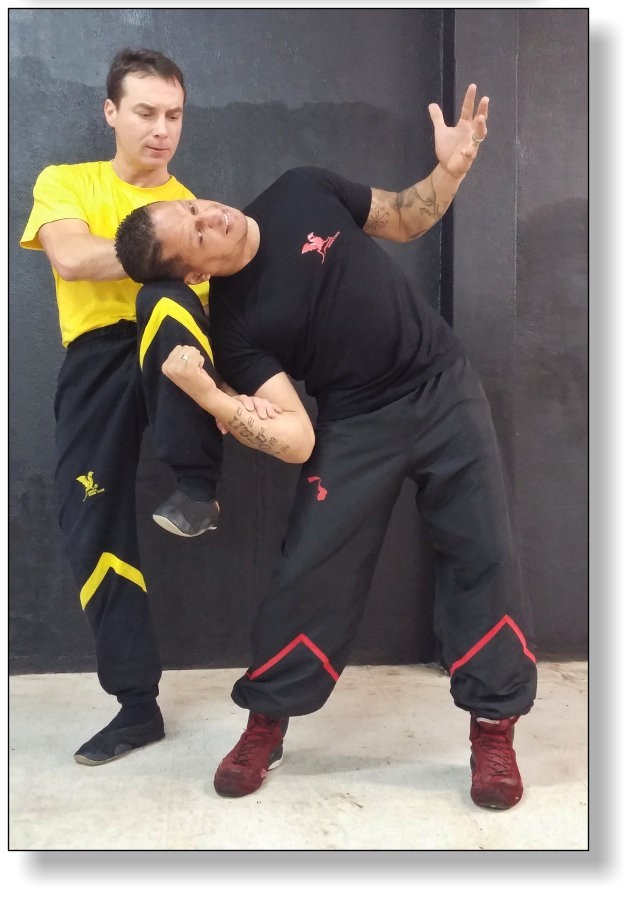
DRAGOSWINGTSUN.com sees itself as a portal and access point for all friends of WingTsun (WingChun, VingChun, Ving Tsun etc). It is aimed to speak to beginners and experienced technicians and instructors of WT. While we want to facilitate beginners to get started in the fascinating world of martial arts, the more experienced martial arts friend should also have the opportunity to complete his training, by finding the content that was kept from him.
eLearning (Online Course)
During the last 10 years Dai-Sifu Martin Dragos has devoted himself to refining his system and the expansion of the WT-Masters Academy (intensive training). This approach has now been extended to include eLearning (online distance learning) of DRAGOS WING TSUN ONLINE ACADEMY. Thus, the student has access to the contents of his training in advance, to improve his learning process. Through the constant updates, the student is always informed about the latest developments.
Comparison of the Systems - WT vs DWT
Better is the enemy of good, they say. But we do not deny our origins and the starting point of our developments. Thus, the visitors can get impressions of classical WingTsun in the Open Source Gallery and, by visiting the DWT Online Academy, compare its contents with the more complex contents of DRAGOS WING TSUN®.
Seminar
Choose the best possible training option for you: Bootcamp, Intensive Week, Weekend seminars, Private lessons - or book us for seminars at your school.
Learning through Cooperation Partners
In order to really make progress, theory and practice must walk hand in hand. Do not fall for the mentality of many impulsive WT practitioners of being a collector of techniques - it does not work. Only through practical experience we arrive at comprehensive insights. Precisely because Wing Tsun is a very sophisticated martial art, practicing it alone can lead you to make a significant number of mistakes. The one who tries to reinvent the wheel loses a lot of valuable time of his life. Time which he could use to build on an existing foundation. By trusting a teacher we develop our skills faster, because nothing inspires your progress more than the practical applied example of a teacher. Our partners (tutors) allow you to participate in a training program near your home.
DRAGOS WING TSUN LEAGUE
What is DRAGOS WING TSUN LEAGUE?
Alliance of Martial Arts enthusiasts

Welcome to DRAGOS WING TSUN LEAGUE!
DRAGOS WING TSUN LEAGUE is an alliance of enthusiastic martial arts teachers, which aims to spread DRAGOS WING TSUN (DWT) in a cooperative way. Besides the enthusiasm with martial arts, DWT is a system of values and virtue, which pursues the development of character and the collection and cultivation of people to higher levels. Man is a valuable member of society and explores his true self.
Each of our partners sees himself as a team player and takes his job seriously as a teacher. We reject selfish, unsympathetic actions and falsehood. Violent and aggressive people do not belong with us! We understand life as a constant flow of new experiences and personal growth. The willingness to constantly take on to work and gain new knowledge that will eventually lead to inner growth and satisfaction is what we are looking for. We want those who strive to cultivate their human potential and to develop the best of themselves. With that in mind, we want to help people live a positive life. If on the following pages of this website, we can ignite the fire of enthusiasm in you, we are off to a good start - Let the journey begin.
Here we go - To experience the Origin of a New Network (launched May 2016)
Most WT organizations are profit and growth oriented. Agressive, disrespectful mentality, structure of abuse of power, territorial conflicts and hostility towards market competitors and other martial arts are THE standard in WT-circles. This negative development is mostly the result of imitation of previously seen models (gurus). Often, the biggest WT associations work as pyramid, selling rapid growth at any cost. Their variety of stores is to a large extent composed by quickly formed semi-skilled instructors ("Wenigwissern"). DRAGOS WING TSUN LEAGUE distances itself from this kind of organizational culture!
Our network (alliance) presents quality and ethical standards which are fundamental for the starting point of a cooperation. For example, the starting level for a recognized instructor is the 1st Technician level DWT - a level that can only be achieved through hard work, time and dedication. Such level is achieved not in short courses overnight or by dubious online tests, in which the teacher and the students never touch each other. Having actual skills is what is important, rather than having a bought title. In addition, only people who stand out by appropriate respectful and human behavior and who have earned the trust of the existing instructors are included in the group of future tutors. We prefer to be surrounded by a circle of the Family/Friendly enthusiasts, as opposed to an army of disrespectful people.
The Training Concept
The Training Concept
DRAGOS WING TSUN LEAGUE - Training Concept
5 Steps to Success in WingTsun
Many roads lead to Rome, it is said. And indeed, you are free to choose how you want to develop the contents of this portal and your training program. But those who rely on our judgment will have the opportunity to be walked through our views on the best ways to follow.
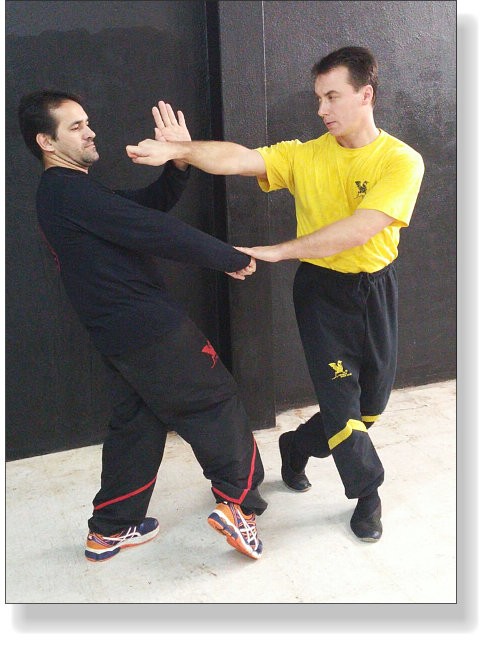
The DRAGOS WING TSUN LEAGUE training concept is based on the interaction of Online-Academy and Live Seminars.
We recommend the following procedure:
Step 1 - Program Acquisition: Purchase one of the program modules of the DWT Online Academy. Based on the samples of the Open Source Gallery (see item DWT 3.0: Excerps and Samples of DWT Online Academy) you get a taste of what to expect in the program modules. You can have access to the modules purchased online or at a reduced price on one of our seminars.
Step 2 - Review of the Program Content: Explore the educational videos on DWT Online Academy. This gives you an understanding of the underlying theories. Skeptics sometimes shout, one can not learn a martial art from video - to a resounding "jain"! The truth is that without knowledge of the concepts and ideas no practical reaction is possible. The theory, thus, comes in the first place - and instructional videos can convey this to a large extent. An often-overlooked question is ultimately whether there is a cognitive process. Before applying anything, we need to understand the idea behind it and see its practical application. Understanding the idea is the key to self-correction. We go from the level of pure imitation to higher levels of independent performance. It is the understanding of things, which enables us to correct our own mistakes and to stay on course during learning, especially because we don't always have a teacher at our side.
Step 3 - Take part in Seminars parallel to Online Training!: Whether you train directly with head coach Dai-Sifu Martin Dragos or with one of his connected tutors (eg attending evening classes or private lessons), in the seminars you get corrections and the necessary finishing touches. Although the Online Academy comprises the core of the training content (Core Files), there is still much more to learn than we could mediate in videos.
Step 4 - Tests (Optional): In the training program, you can also, optionally, undergo exams. In DRAGOS WING TSUN LEAGUE the examination system is regulated as follows: Basic Levels (corresponding to student grades) are conducted by the tutor. Exams of Technician levels are conducted by head coach Dai-Sifu Martin Dragos. The cooperation between Dai-Sifu Martin Dragos and partner tutors includes also that you participate, no later than at technician level, on the intensive training (WT - Masters Academy or Master Class) with the head coach. This way uniform standards and quality of education are additionally secured.
Please understand that we dissociate ourselves from so-called online exams because of lack of credibility. You want to be respected in the real world - and that is what we also want. For this reason we reward only genuine achievements.
Step 5 - Become a Partner! (Optional): For those who have been qualified by a test with the head coach, the possibility of entering into a partnership as a tutor opens. You can thus continue with your training as a hobby or make this into a professional career. In addition to image and a known brand, you will profit from the exchange of prospective and comprehensive assistance and know-how for the realization of your (school) project.
WHAT IS WING TSUN?
Base Systems of WingTsun
The Base Systems of WingTsun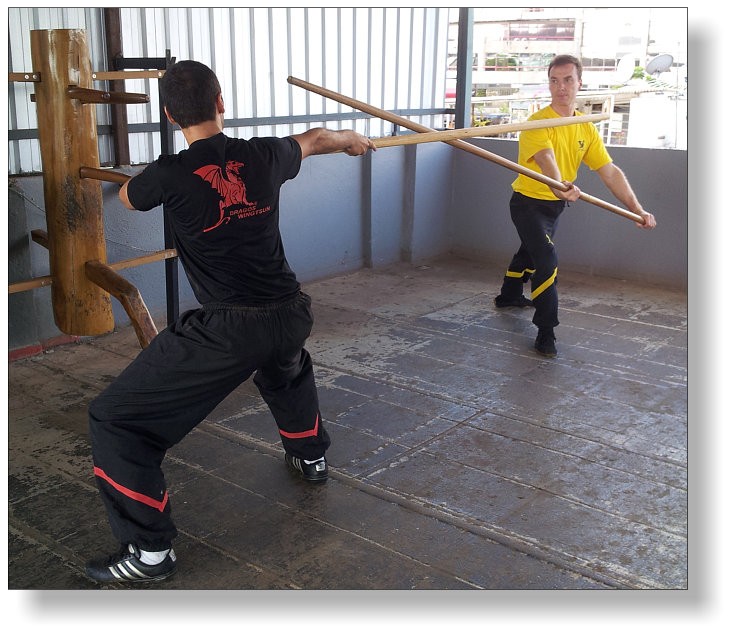
WingTsun (in mandarin chinese “Yong Chun”. “Wing Chun”‚ 'Eternal Spring', a Buddhism borrowed metaphor for "eternal life") is a martial art from southern China, whose origins go back to the 19th century. In English, the spelling 'Wing Chun' is more frequently used. To distinguish from trademark issues from other schools and organizations, now numerous variations of the name are in use, for example, Dragos WingTsun, Avci WingTsun, Wing Chung, Wing Shun, WingTsung, Wing Tsjun, Wing Tsiun, Wyng Tjun, Ving Tsun, Wing Tzun, Wing Tjuen, Ving Chun, but also completely different names, such as Senmotic.
• “Tai Chi”, which is marked by Taoism; Here we find aspects of giving way and of borrowing opposing force, and the use of feeling and the sense of touch, which is developed by special contact feeling exercises.
• “Ling-Lom” ("Air Monkey style"), which is considered the precursor of modern Thai Boxing; the refined use of knee and elbow techniques, simultaneous techniques for attack and defense that are similar to the training at the WingTsun wooden dummy, and the use of "relative behavior", a method which is used to compensate for disadvantages against a faster or stronger opponents. By using the enemy's movements, and adding our own movements to theirs, we are able to obtain security.
• “Hung-Gar-Kuen”, a Kung Fu style that includes animal imitations and from which also emerged the weapons of WingTsun before the modification of its principles. For example, in the "BiuTze" ("Thrusting Fingers Form" of WingTsun), we can see very clearly the imitation of snake movement with its elegant, wave-snapping traits. On the other hand, movements with the arms outstretched have similarities with the "Crane Style" of Hung-Gar etc.
Classification of Martial Arts
Classification of Martial Arts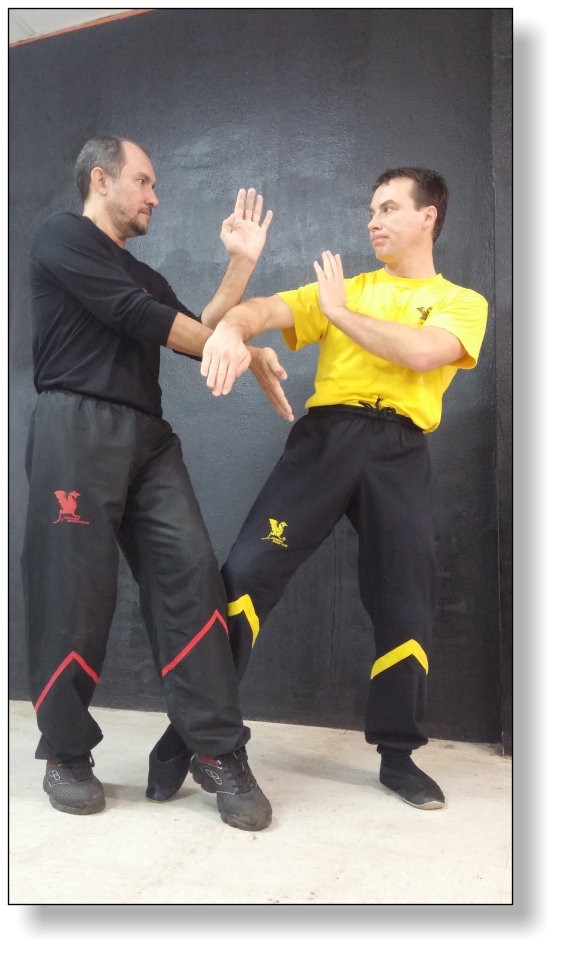
While the origins of all martial arts are due to the purely pragmatic dimension of self-protection and defense, different priorities developed over time in terms of its use.
The following system of classification is not a rank, but only a characterization, with an indication for the respective application and intended purpose. In this sense, today's martial arts can be roughly divided into 4 large groups:
• Systems, which rely on Physical Fitness and Strength: the goal of "Body Focused" systems is the development of willpower and strength. They can be ultimately traced back to the Buddhist influence. As examples, we have Tae-Kwon-Do and modern Karate, which are direct descendants of the so-called hard Chinese Kung Fu styles.
• "Physiologically-Oriented Systems" such as "Tai Chi"; the "Fighting Tai Chi" fell into oblivion after banning and persecution of its masters during the Chin dynasty. A cultural revolution, however, brought back the forgotten health-oriented part of this art. Today these styles are widely known for their meditative character and its slow flowing movements.
• By "Opera or Show Systems" we mean those styles, which are suitable for theatrical and spectacular performances. They were originally used within the Chinese Beijing Opera to stage impressive battle scenes. Among the best known contemporary actors, which completed the rigorous training of Beijing Opera and offered their acrobatic skills to the world of cinematography are film stars such as "Jackie Chan", "Sammo Hung" and "Jet Li".
• "Combat Systems": the focus of these systems is the development of defense capabilities. Particularly, WingTsun is now considered an effective system of self-defense, which is often used by special units of the police and military forces. However, times are changing again. Today we observe commercially motivated adjustments and trends in the directions mentioned above (especially because of the fitness and wellness industries).
History
History of WingTsun
Origins Legend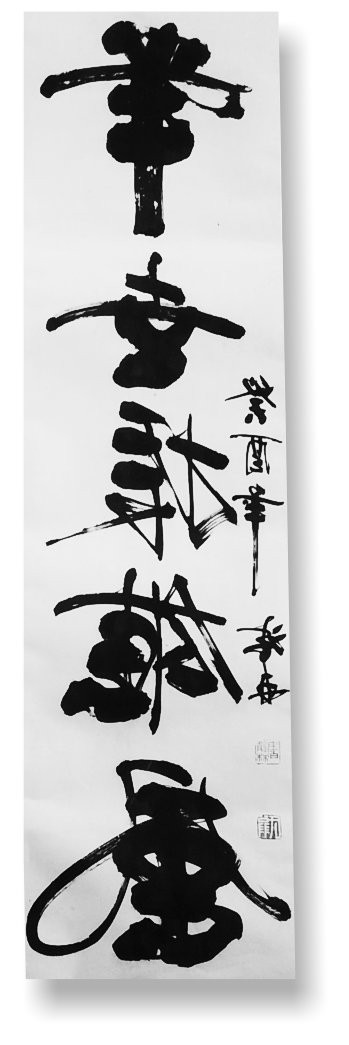
On the Origin of WingTsun, there are numerous myths and few verifiable facts. The beginnings of its roots are traced back to the Shaolin Monastery. According to legend, the Buddhist nun "Ng Mui" (Ch. Wu Mei) tried to create a martial art for the physically fragile, which could be effective against hard Shaolin Kung Fu styles. She then transmitted her knowledge to a girl named "Yim WingTsun", in order to allow her to successfully defend herself against a local bandit who oppressed her. Other sources mention that, once a small group of capable fighters met in the "Hall of Eternal Spring" there was a mutual exchange of knowledge in Tai Tak Lan which inspired them all into creating the system.
Regardless of different origin legends, consensus is seen in the fact that all WingTsun Styles refer to an opera troupe called "Red Junk". One of the historically verifiable facts is that among those actors of the Red Junk, which learned and developed WingTsun later in, was the herb doctor "Leung Jan". The earliest written records refer to 1854 and are available at the "Foshan Museum".
The WingTsun we know in its famous form nowadays came primarily from the traditions of two masters, Yuen Kay Shan and Yip Man. While the Yuen Kay Shan lineage is characterized mainly by the Taoist-flexible behavior, the Yip Man lineage attempts to increase the practitioner's own power and opportunities by using favorable angles, positions and lever mechanisms.
The Five “Elders”
According to verbal history, during the Manchu rule (1644-1911), the southern Shaolin Temple became na obstacle to emperor Kangzi because it was suspected that it offered shelter to members of secret societies.
As a consequence, the southern Shaolin Temple was destroyed by fire. The northern Shaolin Temple, however, was spared and still exists today. Among the top five masters who escaped the fire were the Buddhist nun Ng Mui and the abbots Chi Shim, Pak Mei, Fung To Tak and Miu Hin - they were henceforth called the "Five Elders". To escape the Manchus, they obtained secret identities and separated partially. For example, abbot Chi Shim took an identity as a cook on the "Red Boat". This was a transport ship for opera companies, which was usually painted red. Ng Mui settled at Tai Leung Mountain, close to the "Temple of the White Crane".
On a square nearby her village, the nun Ng Mui met Yim WingTsun and her father Yim Yee, who were selling Tofu there. On that day, a well-known bandit named Wong grabbed the hand of the adolescent daughter and held her incessantly. As the situation escalated, Ng Mui decided to help the girl. She took WingTsun to be her student in the White Crane Temple and trained her for 3 years, making her a master. Returning to her village she faced the intrusive philanderer Wong and finally overcame him in a fight, being from that point on left in peace. Ng Mui named her art after her pupil: WingTsun. Since then, the martial art was passed on from generation to generation within families and clans as a secret tradition, which is why the art was considered for a long time as a secret system.
The Emergency of Secret Societies
During the Manchu period (1644 – 1911), the Chinese were constantly suppressed by the official government. They were forced to forget their entire cultural heritage. Many rituals, customs, traditions and practices could no longer be pursued in that time period. Men had to shave their heads, as a sign of submission, and wear a ponytail. Since all these schemes constitute a major setback in the habits of the Chinese people, several groups of people started to organize to resist, in the so-called secret societies. Through that, heritage was further maintained and resistance was organized. It is estimated that there were approximately 3,600 different secret societies at the time. Among the best known of these are the "Hung Moon", the White Lotus, the Tong, the Triads, the Boxers and the Chinese mafia. Anyone who was demonstrably a member of a secret society, was punished with death. Members of the Hung Moon were led by Geheim-Logen (Druids) and by Sifu (Kung Fu teacher), with the latter being in charge of the combat training of the resistance.
Ng Mui is considered the ancestress of WingTsun. During her life she moved around different places of the country, founded several secret societies and trained different Sifu Patriots in martial arts. The style of WingChun is the collective product of generations of martial arts masters.
Modern History - Yip Man's impact on contemporary WingTsun
Most variants of WingTsun that we have today, go back to Yip Man (1893–1972). Running away from the Japanese invasion of China in 1949, he went to Hong Kong. One of his most famous students was the film actor Bruce Lee.
Yip Man learned the martial art as a young boy from his teacher, Chan Wah Shun. Later, Chan Wah Shun's student Ng Chung took over his school and, allegedly, Yip Man started to train with a son of Chan's teacher, named Leung Bik. The existence of Leung Bik is now considered controversial. It is suspected that Yip Man invented this as an excuse to legitimally modify parts of the system and incorporate other influences which, at the time, would be considered a "deviation from the line in question".
Philosophical Foundations
Philosophical Foundations
The emergence of WingTsun was influenced by several philosophical currents. Interestingly, many of them partially contradict each other at times. From a pragmatic Chinese point of view, however, this is perfectly acceptable.
The Buddhist Influence
Early in his training, as the student matures he comes to the realization that there is no progress without extenuating effort. The student, not the teacher, must work patiently with his partner or by himself in front of the mirror. The fight against one's own shortcomings takes many years. Only through constant and tireless practice one can learn WingTsun's typical delicate movements and balance, stability, coordination, relaxation, correct breathing and unique techniques. This philosophical line encourages the development of independence, concentration, willpower, proper effort and firmness of purpose in a defensive situation. Willpower is the goal.
Taoism
Taoism is a philosophy of nature that teaches us not to meet force with counterforce, but to make use of the force of others to our advantage. Softness and flexibility in this case can defeat raw power. Rigidity and solid plans are unsuccessful and hinder us. In training we learn the harmony between opposites in our body, which comes when we implement the WingTsun principles: extremely soft, absorbent and spring-like defensive movements, with hard counterattacks on borrowed power. At any moment and independently of each other, our limbs must master the wise dynamics of changing between tension and relaxation. The Taoist principles can be applied successfully in everyday situations.
Confucianism
Confucianism involves mutual loyalty and respect between teachers and students or between the elder and the young. The student should respect the teacher and listen to his advice. The teacher, in turn, must recognise this conduct as worthy and accept the young one, as well as offer his aid and counsel to the student. By example, the teacher must guide the students. Good manners and compliance with etiquette (eg, bows in greetings or after teachings) are de rigueur. A student who defies these elementary rules of mutual respect, can not be accepted in the long term by his teacher and has to leave the school.
WingTsun Lineages
WingTsun Lineages
Among the most famous classical WingTsun styles are:
• Yip Man Style
• Yuen Kay Shan Style
• Yiu Choi Style
• Pan Nam Style
Other, less known lineages:
• Pao Fa Lien Style
• Yuen Chai Wan Style
• Yip Kin Style
There are also several companies and hybrid styles that took the influences of other martial arts to create new systems.
DRAGOS WING TSUN sees itself as a "next-generation WT".
It combines knowledge that was applied and tested with new approaches to compensate for the "missing links" and weak points of the system.
The Dimensions of Action
How WingTsun works – The 6 Dimensions of Action
Next, we will illustrate how WingTsun works, based on the 5 different levels or dimensions of action:
1. Strategic Dimension
“Hit and don’t be hit – the greatest fortune in the world for WT” This axiom essentially reveals what is involved in the strategic dimension of WT: In WT we behave, ideally, in such a way that we don’t allow the opponent to use his weapons or if we don’t allow him to reach us while we use ours to take him out of action. These guiding principles are subordinate to tactical measures (actions) and relate to the classification of fighting scenarios that arise because of fight or flight behaviors.
Even in nature, e.g. in the animal kingdom, conflict situations can ultimately be traced back to two behaviors fight or flight. While in WingTsun attacking actions have accommodating and preventive character (in the sense of hindering the approach before it unfolds), defensive actions are always associated with an evasive or escaping behavior, in order to avoid a collision.
A behavior which constitutes a deviation from these two "ideal" behaviors is categorized as "emergency situation" in WingTsun. Examples would be: losing balance, breaking in positions, situations where we are isolated or trapped, missed timing, unavoidable collisions, simultaneous attack by several attackers, etc. To solve these emergencies, we often have to deviate from our ideal options (eg no simultaneity of attack and defense to be able to establish a coverage protection in an unavoidable collision) to even still get the situation under control and turn the tide. Especially the "BiuTze-form" includes many movement patterns which have emergency solutions in its content.
2. The Dimension of Energy
Dealing with forces can be divided into:
• Actions that help develop and transfer one's potential strength, exploring it fully: this includes knowledge of the mechanical connections of the body. For example, the muscle actions needed to execute downward, upward, as well as horizontal movement patterns by using the body's own weight (use of gravity), principles of force generation (such as pushing the floor for upward movements), prior tensioning of muscles with isometric contractions and much more.
• Actions that allow you to make use of the opponent's strength: this includes exploring the aggressor's attack force approaching to "empower" your own punch or kick. The use of opposing movements in order to steal the balance or accelerate our own movements.
• Measures which are necessary in order to disarm the opponent's actions, making them ineffective or neutralize them: an example of this is an opponent approaching in a low posture. To deal with this, we must mirror his actions by also assuming a low posture to be able to exert similar power potentials. In particular, the hermetic axiom of "Equal versus Equal" is observed here. In the moment of an attack, especially with unavoidable collisions, this principle is seem, where the attack applied to us can only be answered by a counter-impulse of equal intensity and of opposite direction. We see this, for example, very elegantly at the weapons applications. When our enemy is using a heavy weapon with great force, and we only have the very light double knives at hand, we have to increase your speed at the moment of impact, to compensate his attack's strength accordingly (momentum compensation).
3. The Mechanical Dimension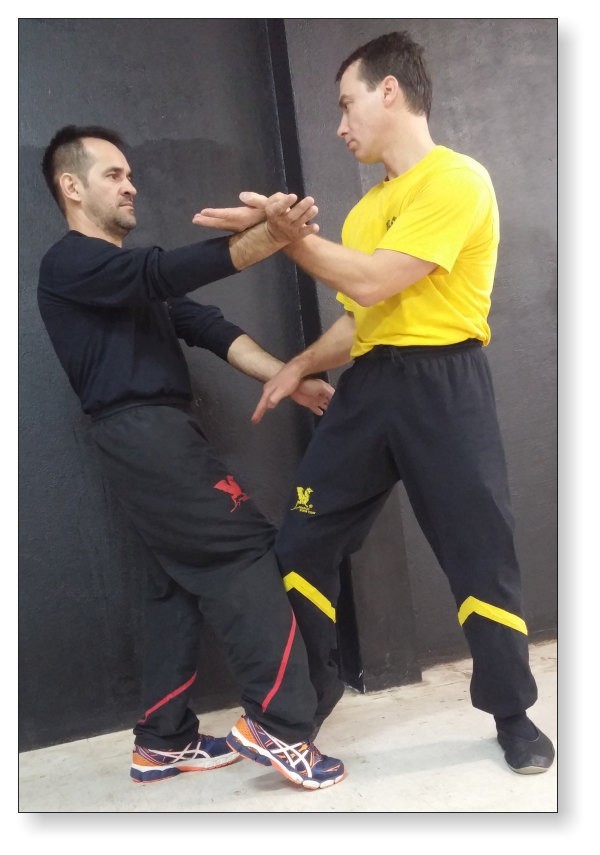
The mechanical dimension of WingTsun includes the Law of Cause and Effect during the fighting action. Movements to pull and push the enemy have, mechanically, a direct effect on our bodies or limbs. Although in WT our arms and legs behave "elasticly" - like a bamboo stick that, when bent, is capable of storing potential energy and explode in attack again - this "resilience" is represented by spring-like movements which provide a mechanical 'diffusion'. For comparison purposes, imagine extremely precise movements performed by gears made of stainless steel, which are extremely hard. These, in turn, are mounted on gemstones. Once the used components are manufactured and assembled with extreme precision (eg tenths of a millimeter), the mechanism works like a clock. Now, if one of these gears is replaced by another, made of an inferior material which wears out easily, gaps are created in the mechanism. You can already imagine that this clock will no longer work so precisely.
It is the same with WingTsun. Our body has tendons and joints with large capacity for power absorption. We can see examples of this very well during the so called "Chi Demonstrations", presented at birthday parties of Chinese children to entertain guests. An example of such "demonstration" would be a person breaking, with a hammer, bricks resting on the head of a magician. The spine of the brave magician in question absorbs the impact of the hammer blow, so that nothing worse happens. In general, the more accurately we are able to convert the actions of the opponent in a direct mechanism, the faster we can use them to our advantage.
The Myth of Eternal "Softness"
Unfortunately, many WingTsun students blindly trust their teachers, instead of creating their opinions based on their own experience of what really works or not. Teachers who preach absolute "lack of strength" or "softness" with no limits, only try to hide their own shortcomings, justify their physical weaknesses or disguise the fact that they themselves do not possess the minimum force necessary for the practice of WT. Softness always includes a resilient behavior and has nothing to do with weakness! Why should anyone, for example, behave in a totally relaxed manner, without force, when facing an opponent who is actually stronger? Why should a strong spring voluntarily be compressed by an inferior strength? In WT when we reach our opponent early or easily by using perfect timing, there is no need to give in. But what happens in practice and in most cases are inevitable collisions. This leads to the need of a tool capable of dealing with this kind of "emergency". What is needed here is what we call the Minimum Force.
Basically, we distinguish between three coping strategies, with which we can protect ourselves from collisions. Each of these results is based solely on mechanics and not in an additional decision during the moment of impact, because we will never have enough time for such decisions. The only exception here would be the "tie situation", that is, none of the fighters was hit or lost his balance. This situation often occurs in those collisions where the opponent HAS NOT decided his next attack. For example, the opponents are too far apart, and it's not yet possible to determine the actual increase in force or displacement. The results of collisions, which will be discussed next, take place at a distance in which the opponent is actually able to hit us or "pass through" our defense with a blow towards our head or body.
After a collision that cannot be avoided, the following may happen:
1. We were able to distract the Opponent's arm: In this case, we remain protected while the opponent is hit. This is equivalent to the principle of simultaneity of attack and defense. Physically, two bodies cannot occupy the same space at the same time, making it easy for us when we ourselves have the ideal "Occupation Attack Line".
2. The Opponent's Attack is so strong that Moves Our Arm:
In this case, our arms have sufficient lateral stability and, trying to move us to take the ideal line of attack, the opponent ends up "pushing us away", for example moving us to the side. This corresponds to the so-called "relative behavior". In other words, when the opponent pushes us away from him, he cannot reach us. It looks a bit like the parable of the "donkey chasing the carrot." A man, sitting on a donkey, holds a carrot tied to a stick in front of him. The donkey, while trying to reach the carrot, starts to run but cannot reach its goal. The displacement of our body by the attacker usually leads to loss of our balance, but also moves us (automaticaly) to safety. The resiliency therefore is mainly obtained by our body movement to the sides and by the footwork needed for us to be able to "steal" back the lost balance. The advantage of this ideal behavior properly executed is what we can accomplish, in the sense of a "safety valve", by attacking and defending simultaneously without needing to make an additional decision, to "give in or not." We think simply about the attack itself and about the fact that it will be guided by an optimal line of attack.
In practice, during this process we will return the impulse applied to us and this return initially acts to steal our balance. In the next moment, we get closer to the opponent again using a movement of "pull" that simultaneously steals his balance and brings us back towards him (Reborn Power Principle). So practically nothing is lost in this closed energy cycle formed by attacker and defender. The force applied by the opponent on us is the cause of our loss of balance, enhancing thus the power of our counterattack. In contrast, if we attack "weakly" (which is often erroneously referred to as "a soft attack") this puts us in danger because we will not be able to hit the opponent with a significant impact or be able to take advantage of the mechanical reaction advantages caused by the collision.
3. Our Limbs Give In:
The phenomenon also known as "Poon-Sao" or "Bending Elbows" happens when our own arms do not have the minimally required lateral stability. When we have a situation of similar (or even identical) strength and reach of both opponents, it is the different timing of the one who has taken the initiative, that will generate this type of reaction. The more "stretched" arm of the opponent who took the first initiative is able to generate more power through the contraction of its muscles (As a comparison: It is easier to lift a heavy dumbbell with slightly bent or stretched arms than it is with them fully bent). This also happens when the oponnent has a more favorable position. This is the case, for example, when the opponent attacks "from the inside", being able to "push the ground" and thus create more force. Because our arms are bending, we are forced to use the next joint to protect our body. Usually, this joint is the elbow. The "fold" or collapse of our arm is, however, risky, since we are exposed within the short time that the elbow does not occupy the new protective position. It may take just a split of a second to execute this protective movement with the elbow. In view of the possibility of a fast and explosive attack by the opponent, however, even this time is (relatively) scarce.
Another disadvantage is that, due to the breaking position, there is a lack of economic activities. Instead of having "control of the two arms of the opponent with one" (principle of 2 vs 1), a mere principle of 1 vs 1 is obtained, without the benefit of economy of movement. The collapse of the position of our own limbs is thus classified as an "Emergency Solution".
Definition of Minimum Force
When someone claims to be able to defend efficiently and effectively without using any kind of force, clearly we identified just another publicity stunt to draw attention. If you believe that, wake up! From a mechanical point of view, you are only really safe when you have acquired the minimum force necessary to properly execute WingTsun. Minimum force is defined as the lateral stability of each movement that, in the event of a collision with the opponent's attack (and because of his greater strength), moves us to safety. It is not necessary to "stop" the opponent's attack. In the case of an unavoidable collision, rather than to compete with the lateral stability of the opponent's limbs, our body is moved, when we have the disadvantage of a smaller body weight. A fitness level similar to that of a mediocre level athlete is hardly achieved by common and untrained people! This concept of minimum force is an ambitious goal, but it is accessible to anyone, man or woman. Not everyone will agree with this thought, because many are deceived by false promises of 'Grand Masters' or live, in that respect, in a fantasy world.
Definition of Maximum Force
The maximum force refers to the maximum force that one is able to exercise in their actions. It is limited by the higher principle of balance (internal). This phenomenon is thus described as "internal strength". In simple terms, this involves the renunciation of the central axis of the body to use the force of gravity (eg. not leaning the trunk forwards or backwards). An example will illustrate this: stand up on a slippery or "unstable" surface (lying bottles, a stretched rope - slackline-, on top of a ball, on the ice, etc). Now, exert a compressive pressure (push) on a partner. Quickly, you come to the conclusion that if you lean forward or backward, after the partner initiates contact, you will lose balance. In this exercise, the principle is very clear. Consequently, this means that we must learn to generate our movements and strength from inside the body.
4. The Dimension of Information Processing
Simplified models of perception can provide us with valuable benefits related to timing in a fight. Especially during the visual phase of pre fight and early defensive actions, the wide variety of possible attack patterns can overwhelm our perception. With the help of the body's strategic division into three protection levels (two levels for the trunk and a low level, associated with the legs), we can halve the time of perception and decision in WingTsun. If you get used to basically protect 3 levels, only the decision of "in or out" must be made and then we "don't need to worry" about what level we are being attacked in.
This also has a special role in the case of an unavoidable collision, increasing the chances of the brain to be able to handle the large amount of information coming. Check for yourself: A person is unable to think of more than one thing at once. This consideration brings with it the fact that, in WT, we cannot do miracles with what is beyond the processing of technical information barrier. A "system" really depends, therefore, on the ability to effectively dispense the decision-making needs. At no other time of the fight we have less time to think about our actions than in the moment when the opponent's attack is inevitable and, therefore, is almost reaching us. Here the mechanical solution is, thus, not only possible but sensible because it frees us from the need to make a decision by "giving in" or not. Attack and defense (through defensive dodges) happen simultaneously without any additional decisions.
5. The Ethical Dimension
We all know the words of wisdom of an old Chinese teacher who said 'Avoid an useless struggle, prefer to hurt rather than to kill and only kill to avoid being killed'. This has nothing to do with cowardice. Instead it is the smartest way for us to protect ourselves against subsequent problems (legal, health, etc). It is also a sign of respect for oneself and for others. We live in a time when the best way to behave is to respect the rules of society, rather than to go around causing trouble intentionally. Because a WingTsun instructor teaches his students dangerous techniques, a special responsibility falls into his shoulders. Therefore, as part of his role, he must also train his students to have awareness about the value of life and at the same time include discussions about ethical principles that can promote a harmonious coexistence within the community. In addition to the pure martial arts training, the students must have included in their formation, training for prevention and management of violent situations, so that they can avoid upcoming conflicts or possibly neutralize them still in the development phase.Teachers themselves should exercise these principles and go in front, leading by example.
6. The Legal Dimension
General Aspects
In the event of a self-defense situation, we will always be subject to face the legal consequences. In the German Criminal Code we read the following:
(1) Anyone who commits an act, which is offered by self-defense, does not act unlawfully.
(2) Self-defense is the defense required to avert a current unlawful attack on oneself or another (see § 227 BGB, § 32 Criminal Code, § 15 OWiG). 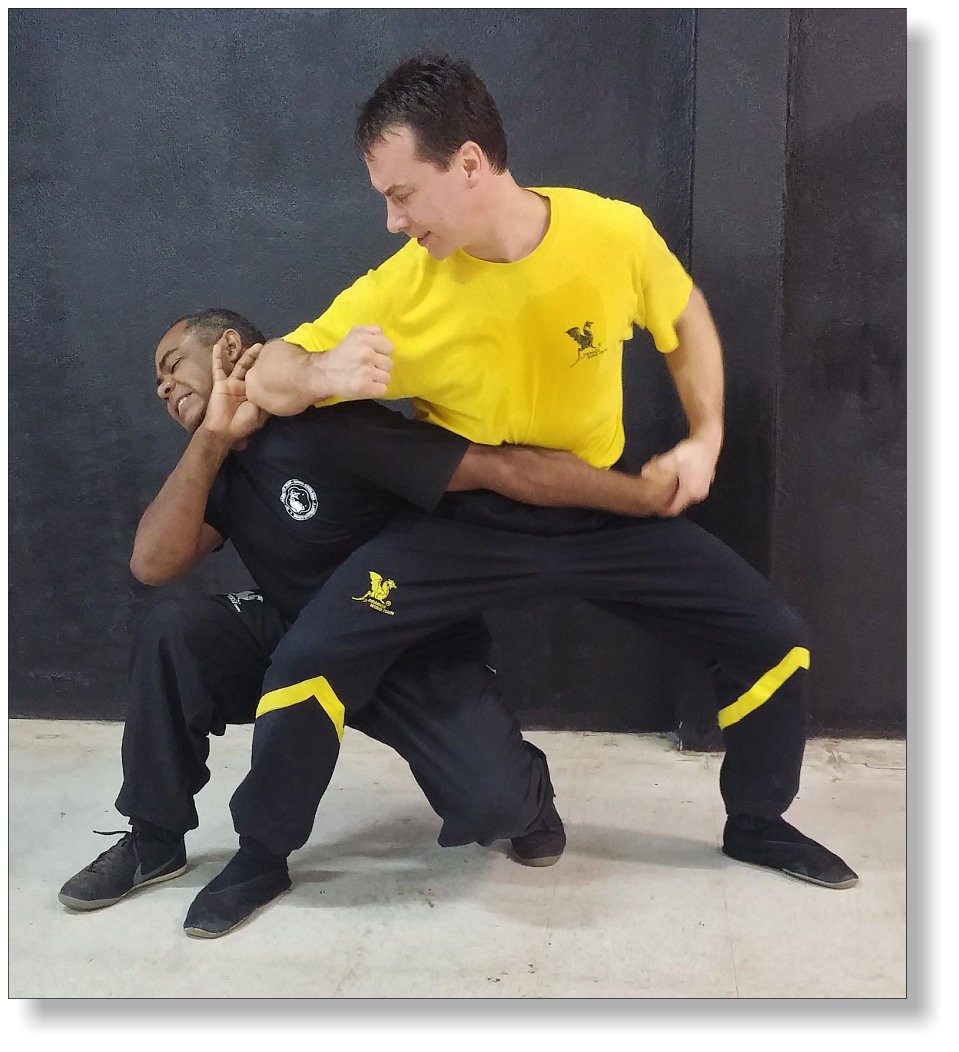 A self-defense act that meets these legal criteria, is a justified interference, therefore, no criminal injustice is present in this situation. All individual legal rights (such as the legal protection of life, body, freedom, honor and property, under the § 34 of the Criminal Code) are covered by the self-defense clause. It is not possible to attack the legal rights of the individual, because the maintenance of public order is the biggest responsability of competent state organs and would otherwise undermine social coexistance. The only exception to this is the right of rescission of Article 20 (4) of the German Law. Since the above-mentioned principle is based on the principle of right of self-defense, there is no rule of balancing. Only in the case of a sharp disproportion of reaction can the right of self-defense be overruled (see the German Legal Code for more information). A self-defense act that meets these legal criteria, is a justified interference, therefore, no criminal injustice is present in this situation. All individual legal rights (such as the legal protection of life, body, freedom, honor and property, under the § 34 of the Criminal Code) are covered by the self-defense clause. It is not possible to attack the legal rights of the individual, because the maintenance of public order is the biggest responsability of competent state organs and would otherwise undermine social coexistance. The only exception to this is the right of rescission of Article 20 (4) of the German Law. Since the above-mentioned principle is based on the principle of right of self-defense, there is no rule of balancing. Only in the case of a sharp disproportion of reaction can the right of self-defense be overruled (see the German Legal Code for more information).
A fundamental aspect here will always be the objective evidence. If possible, you should involve witnesses and also demonstrate with body language that there was no will to aggression on your part. The decisive question for the judge will be the question "who first went to whom?". Exceedings with your reaction are also important aspects at this point. Anyone who continues to attack an opponent on the ground will be punished for negligent or intentional aggressive action. The proportionality of actions also plays an important role. The principle of "equal force of defense in relation to the attack" applies here, for the grounds of self-defense to be accepted.
Conclusions: the legal aspects of the self-defense law are, unfortunately, far from the reality of something feasible in the real world. Only if the subject trying to defend himself had supernatural abilities he would be able to manage the situation unharmed and still be covered by the law of self-defense. It is precisely the half-hearted approach to self-defense situations that is a guarantee for conflict escalations that are even more difficult to cope with. Just keep in mind a pragmatic recommendation: keep out of conflict as far as possible and work so hard on your self-defense skills that you are able to act effectively in self-defense situations.
OBS. The laws for self-defense vary from country to country. They sometimes even vary in different states within the same country. It is highly recommended that you know the specific laws of your country/state.
Characteristics of the Wing Tsun Systems
Characteristics of the Wing Tsun Systems
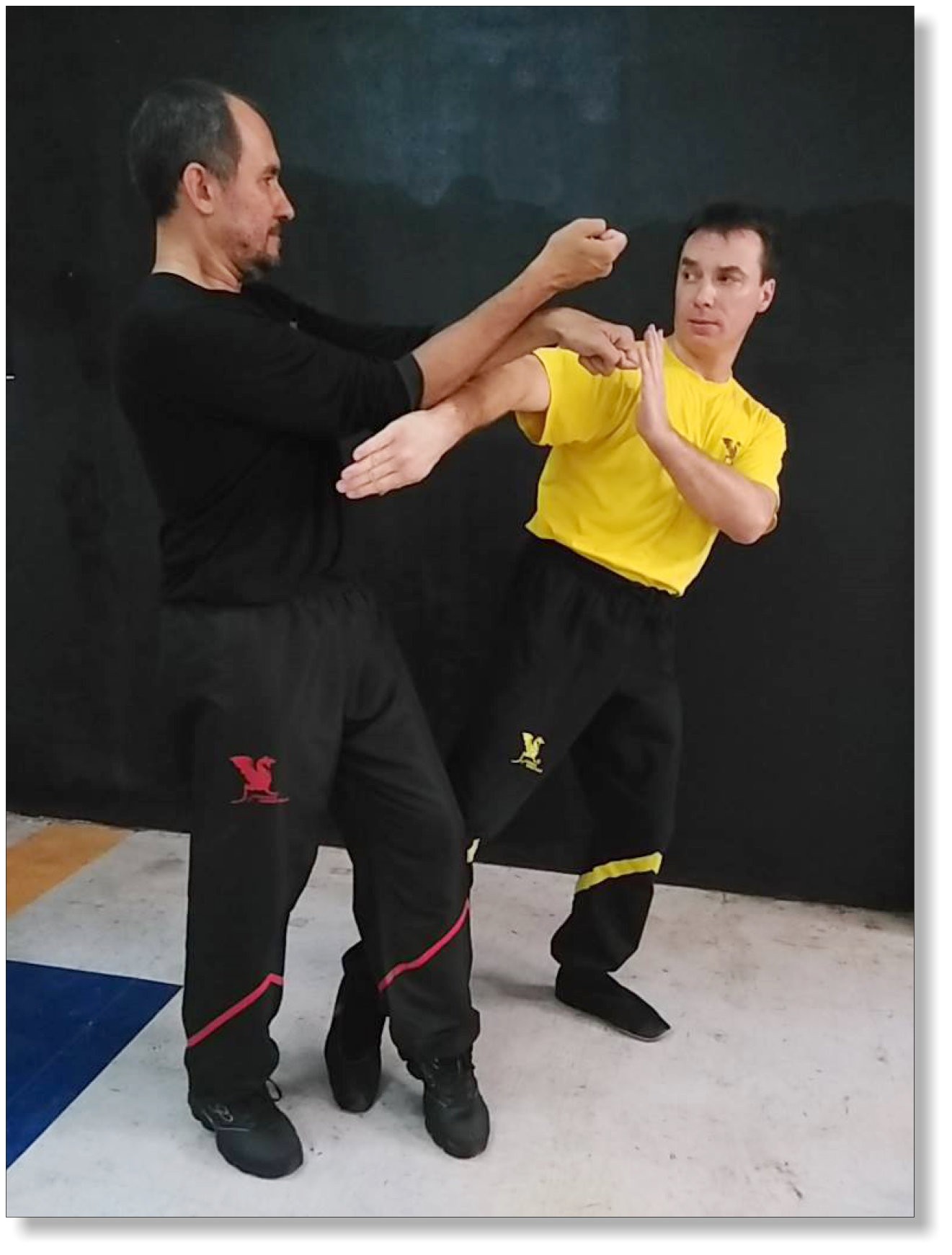 Hand Techniques Hand Techniques
The technique that is the registered trademark of traditional WingTsun is the "Chain Punches" (Lin Wan Kuen), represented by a sequence of quick successive hits. In DRAGOSWINGTSUN®, however, there are differences in the use of chain punches without using the body (where the frequency is what matters) and attacks powered by the body (Hacking Punches). The Chain Punches should be used if we can isolate the enemy's weapons (eg. by "fixing", "trapping") or if we can make him lose balance before using them (opponent "falling" toward us). The Hacking Punches should be used during the attack process as an additional control of the opponent's arms. Both the lead and the rear arms exert control while striking. WingTsun is known for abundance of elaborate hand techniques. Because the steps are, in most organizations, present in the advanced programs, the use of leg techniques is only known by few people.
In addition to Chains Punches, the main hand techniques are "Bong-Sao" ("Wing Arm"; defensive and isolation posture), "Tan-Sao" ("Open Palm Up"; technique for defense, isolation, liberation and create openings) and "Fook-Sao" ("Hand that Controls/Hides"; hand posture of defense and control). These are some of the most often used movements - considered the core of the system.
Kicks and Leg Techniques
Classical WT-System has eight kicking patterns, all derived from basic functions "Stop", "Stepping / Cornering" and "Sweep". In detail:
• "Chang Gerk" (Spade Kick)
• "Wang Gerk" (Side Kick)
• "Hau Gerk" (Back Kick)
• "Chai Gerk" (Stamping Kick)
• "Tae Gerk" (Snap Kick)
• "Gam Gerk" (Pinning Kick)
• "Souh Gerk" (Leg Sweep)
Other important leg techniques are:
• "Bong Gerk" ("Wing Leg"; Defensive and control movement with inward-pointing knee posture)
• "Tan Gerk" ("Turning Leg"; Defensive and control movement with outward-pointing knee posture)
• "Lan Gerk" (Bar Leg)
• "Au Gerk" (Hook Leg)
• "Gan Gerk"; also called Cham Gerk (Sinking Leg)
• "Huen Gerk" (Circling Leg)
• "Pak Gerk" ("Slapping Leg"; a deflecting or opening movement)
• "Tai Gerk" ("Raising Leg"; use of the lead leg as a hook to create an opening )
• "Jap Gerk" ("Leg that Moves Between the Opponent's Legs"; isolation and penetration movement into the opponent's stance)
High kicks are performed in exceptional cases, when we take advantage of certain circumstances. Most kick of the system are directed at lower areas of the body like the thigh, abdomen, knee and ankle. The rationale is that high kicks are dangerous to the opponent, but are also sensitive vulnerabilities.
Static Behavior Before Aggression: The classical WT fighter is static and motionless during the beginning of the fight. He "waits" for his opponent to reach the "Critical Distance" (Magnetic Field Theory). This is a big contrast to other martial arts, where the practitioner acts preventively already in the initial phase of combat, seeking to avoid, through action, the enemy ability to find the best angle of attack.
Fluid movements are another characteristic of Wing Tsun. The movements are in constant flow, so that the opponent has difficulty adapting.
Quick leg movements with wide stances, use the adductor muscles for stabilization in steps, use of turns and of evasive movements with the body are also trademarks of the WT. Traditionally, classical WT has only a few steps: elementary steps for readjusting position to "follow", turns and circular steps.
Note
DRAGOSWINGTSUN® (DWT) sees the existing self-limitation of tradition, with its limited footwork leading to a historic interruption in development. Footwork is used for the implementation of function within applications. An extension of this functionality can occur and therefore usually emerges in parallel to the emergence of new patterns of footwork. DWT is characterized in this regard by an abundance of steps and leg techniques.
Forms
Basically, the forms serve to preserve and internalize the most common movement patterns. The classic WingTsun has 6 Forms:
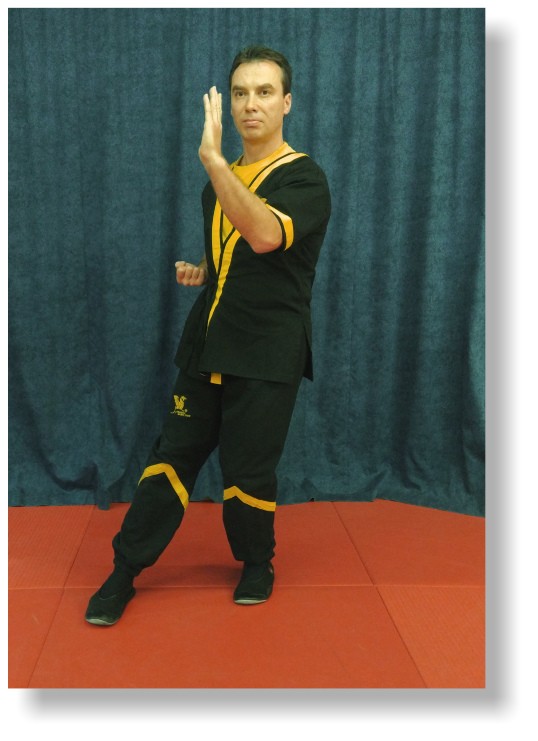 Siu Nim Tao Form Siu Nim Tao Form
The "Simplified Form", or often referred to as the "Little Idea Form" is a didactic approach that aims to teach the system so that our brain is able to understand it in the best possible way. In the classical variant, the practitioner is static and has the lower limbs attention focused exclusively on the action of the adduction muscles. It allows the practitioner to fully focus the attention to every detail, especially due to the reduced range of motion of the limbs. From a scientific point of view, we refer to this strategy as "Techniques Breakdown". Throught this strategy, learning is facilitated by the dismantlement of complex techniques in their individual elements. This is important and useful, especially for beginners.
The movement patterns contained in the forms are not finished applications, being more comparable to "tools". Each tool has a variety of uses in terms of applications. As an example, a knife can be used to put butter in a piece of bread, to open a nut or to hurt someone. Likewise, also the movement patterns contained in the forms are kept, in general, independent of their application possibilities, eg are not limited to a single purpose.
In the form called Siu Nim Tao (also known as "Siu Ling Tao"), learning takes place in three stages. It is a process of integration of different aspects, step by step. After completing this process, the form of the advanced practitioner looks different from the beginner - it contains the synthesized sum of all the parts that were previously dismantled and individually learned, but continues to be a simplified form (it contains only one arm movements or movements of both arms performed simultaneously and symmetrically).
Phase 1: The student learns initially the pure movement of the form WITHOUT body mechanics of the trunk, because otherwise he could be overwhelmed by too much information.
Phase 2: He now progressively starts to develop the motor control of the core/trunk muscles for horizontal, downward and upward movements, learning the turns, the lowering of the body and the use of the stretching the right muscle groups for different movements.
Phase 3: The aprentice learns to use isometric contraction at different positions, to obtain stabilizing properties for different situations. This primarily prepares him to situations that could not be managed without this ingredient (for example, "surprise collisions" in a confined space). As a positive side effect, this stimulus also acts as strength training.
Cham Kiu Form
The so-called Cham-Kiu form, or "Arms Seeking Form", has its name derived from techniques of "building bridges", ie. contact with the opponent's arms, containing in its movements, molding techniques of bridging and contacting the opponent's arms. However, the focus of the form is to provide the most common patterns of movement for isolation (making use of levers), how to deal with isolation attempts, as well as breaking balance using throws. In DRAGOSWINGTSUN® these patterns have been complemented by the scenarios of coping with lost balance. The same is seen in the Biu Tze Form.
Biu Tze Form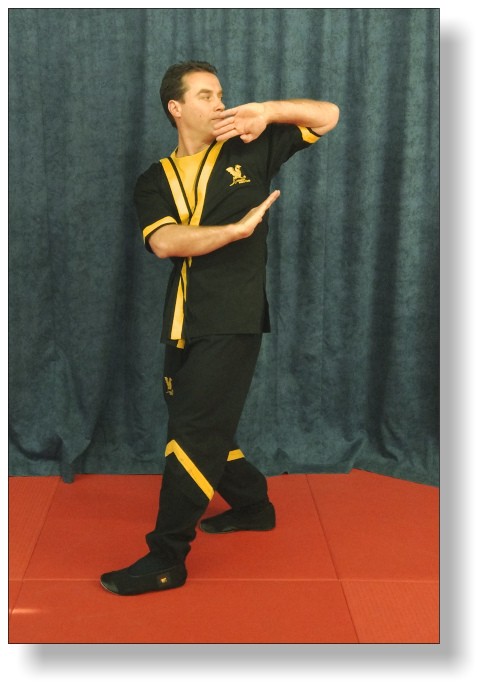
Within the WingTsun community, there is often a discussion about the Biu Tze form being a purely offensively or emergency form. The first is often propagated by commercially oriented organizations to dramatically maintain a rigid vertical hierarchy of forms by the motto: Cham Kiu overcomes the Siu Nim Tao, Biu Tze overcomes the Cham-Kiu, the Wooden Dummy overcomes the Biu Tze, etc. The student thus gets lost in a fantasy of power and cannot wait to get to the next level of training in order to be "superior" than others. And this is stupid, because the forms are connected in their functions and do not compete with each other. It is like a car, with its wheels, steering wheel and motor system. There is no competition between them, because only together they constitute a whole, useful and functional. The same happens in WingTsun. Just to cite one example, the brakes of a car are not trying to overcome its engine, which is not trying to overcome the transmission and so on - this is obviously nonsense.
The Biu Tze, with its smooth snake imitation movements, is originally a mechanism that provides resources to handle multiple attackers and other "emergencies". This explains why its techniques require the use of an "intrinsic" aggression. When we are exposed to multiple simultaneous attackers, every strike must have drastic and immediate results. The use of weapons with great potential for knockout, such as elbows and other dangerous hand techniques (eye attacks, blows to the larynx, etc.) are justified, because of a situation of extreme danger. Thus, both are true: the Biu Tze Form is an emergency form and at the same time contains several dangerous attack patterns.
Mok Yan Chong Fat - The Wooden Dummy Form
The training at the WingTsun wooden dummy is one of the most prominent identifying features of the system. The "Man of Wood" in this case simulates an opponent in which the practitioner exercises techniques and varied strategies. The wooden dummy gives the practitioner not only the chance to practice dangerous techniques and keep his fitness at a high level, but it also allows training through the corrective properties of the device. This requires "consistent" structural dimensions.
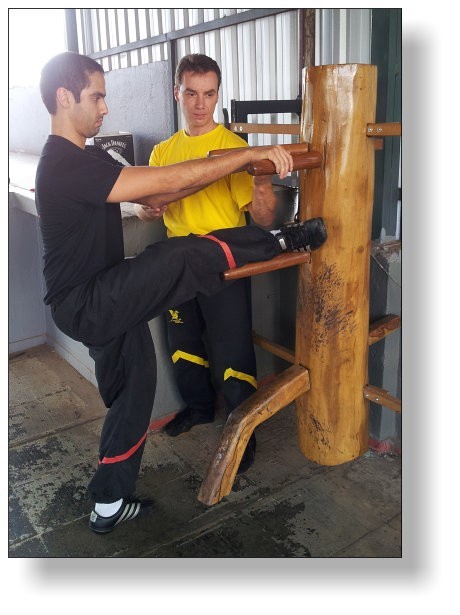 To learn the typical flexible properties of WingTsun (in WT, we give in first using the entire body, not with the limbs) it is necessary for the training partner to have, in his limbs, greater lateral stability than we do. The Wooden Dummy is an essential element that allows you to achieve a high technical level. For more information about this topic, visit the website Holzpuppe.co – All about the wooden dummy of WingTsun. To learn the typical flexible properties of WingTsun (in WT, we give in first using the entire body, not with the limbs) it is necessary for the training partner to have, in his limbs, greater lateral stability than we do. The Wooden Dummy is an essential element that allows you to achieve a high technical level. For more information about this topic, visit the website Holzpuppe.co – All about the wooden dummy of WingTsun.
The last two forms are weapons. They correspond to Long Pole ("Lok Dim Boon Kwan") and Double or Twin Knives ("Bat Cham Do").
Notice
Basically, the compilation of forms is only a teaching tool and they, as such, can be expanded. In DRAGOSWINGTSUN® there are, therefore, a few other forms:
• Punches Form (pure collection of fist blows with arms)
• Steps and Kicks Form (Non-Classical Form; Trained in the Tripodal "Saam Sing Jong")
• Ground Fighting Form (basic standards of fighting on the ground)
Chi Sao – the Exercise of “Clinging Arms”
Chi-Sao is the soul of WingTsun, that is, the part that gives life to the standards contained in the forms. The exercise of "arms that stick" contains the principles flowing like water and elastic spring force. Both came from the observation of natural phenomena and are usually associated with Taoism. Thus, Chi-Sao also describes harmony between opposites (Yin and Yang, strong and weak, hard and soft, etc). Looking objectively, in WingTsun we behave like water, which not only flows, but flows "with intelligence". One obstacle is not overcome by simply waiting for it to disappear, instead, as we act, we allow the "Continuous Flow", for example, through changes of angles, eliminating defenses or forcing the creation of openings ("Door Opening Strategy" in which we draw the opponent's attention through pain).
Chi Sao Sections
In the so-called "Sections of Chi-Sao" the most common patterns of behavior and flow are well documented and registered. Just the unarmed part of DRAGOSWINGTSUN® contains 19 of these study sections, which include the application of Chi-Sao spread in their movements. This is especially important for beginners who need, from the beginning of their training, to be guided and taught by means of practical examples. A teacher who "freely and indiscriminately" trains with his students while practicing "for himself", departs from any convention and, at the same time robs students of their development. They need first to build their foundations, based on understanding and internal consistency. This is similar to a house without foundations - it would collapse. In another words, one that is tossed into the water does not automatically learn how to swim, but it sure can drown! The student should be given the chance to systematically learn all the content on your way, everything that has been conceived by the generations before him. Otherwise, each student will always try to reinvent the wheel - a waste of time and energy. The student who has learned all sections of Chi-Sao, can make better use of his own creativity - to effectively develop from what he has learned! Only in this way the system develops, generation by generation. This is similar to the Japanese concept of "Kaizen".
The Weapons of WingTsun
For those who believe in historical traditions, WingTsun was once a purely unarmed martial art. Only later the weapons were added to the system, with conceptual adjustments.
Among the traditional weapons are:
• “Lok Dim Boon Kwan” – The Long Pole of the System
• “Bat Cham Dao” – The Twin or Double Knives
Lok Dim Boon Kwan (The Long Pole)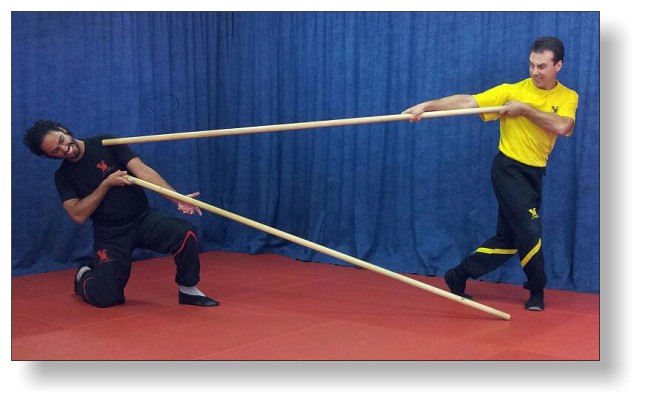
According to the legends, the Long Pole originates from weapons of Hung-Gar-Kung Fu, emerged from the Shaolin Temple. The local monks were famous especially for their arts of fight with the staff. As people of peace, they avoided using sharp weapons and for this reason the staff represented the ideal alternative. Even today we can see many Shaolin Kung Fu demonstrations using lighter bats, mostly sticks of rosewood.
The Long Pole of WingTsun, which was originally used as means for transportation, has a conical shape. It served to push a boat down the river and take it away from other boats (According to legend, the "Red Boat", a nomadic opera group that has great historical importance in the context of WingTsun). Due to its weight and properties, the Long Pole techniques are modified, because the heavy pole has different characteristics of light bats found in the Shaolin Monastery. Also principles like elasticity, "remaining in contact", displacement, wedge behavior and the "Relative Strength" are involved.
The form of Bat Long Lok Dim Boon Kwan - ("Six-and-a-half Points Long Pole Form") is one of the most demanding forms of WingTsun. Students trained in traditional WingTsun cannot immediately start training this form, while using their usual relaxation, their softness and underdeveloped muscles. The laws of physics force the student to think differently. Thus, strength training is early included so that the student can safely and accurately handle and properly move the heavy pole. Only later he will begin to deal with tactical maneuvers.
In WingTsun, the Long Pole is the real teacher of advanced students. Because of the simplicity of its geometry, many principles and insights can be integrated with the unarmed part of the system. In DRAGOSWINGTSUN® this was systematically implemented. Thus, the beginner learns the body mechanics and the steps derived from weapons training already at the beginning. This way the DWT beginner can benefit from this from the beginning of his training.
As a general rule it can be said that advanced WingTsun always includes bodywork. Especially when large forces and simple geometry occurrs, this rule stands out particularly well. The relative behaviour principle is the practitioner's only chance to outwit a faster opponents because of appropriate use of the occurring inertial forces.
The name of the form is due to the fact that its thrust movements leave round holes when entering walls (made of paper), however, the diagonal forward movements of the so called "Half Fence" (In chinese "Boon Je Kwun"- a set of emergency techniques, wedge-shaped) leave a mark of crescent-moon shape, i.e., the "Half-point". In Chinese martial arts, poetry and science are always associated. So, you can find many fancy or unusual expressions.
The Long Pole training is organized into the following steps:
• Strength exercises to facilitate its handling
• Footwork, with step exercises in low postures
• Target practice exercises using static and moving objects
• Long Pole Form; the traditional form contains 24 movements, many of which are repeated
• Chi-Kwan - Sensitivity training using the Long Pole
• Simple Maneuvers of attack, defense and emergency scenarios
• Free-style sparring (Lat-Kwan)
Bat Cham Dao (Double Knives)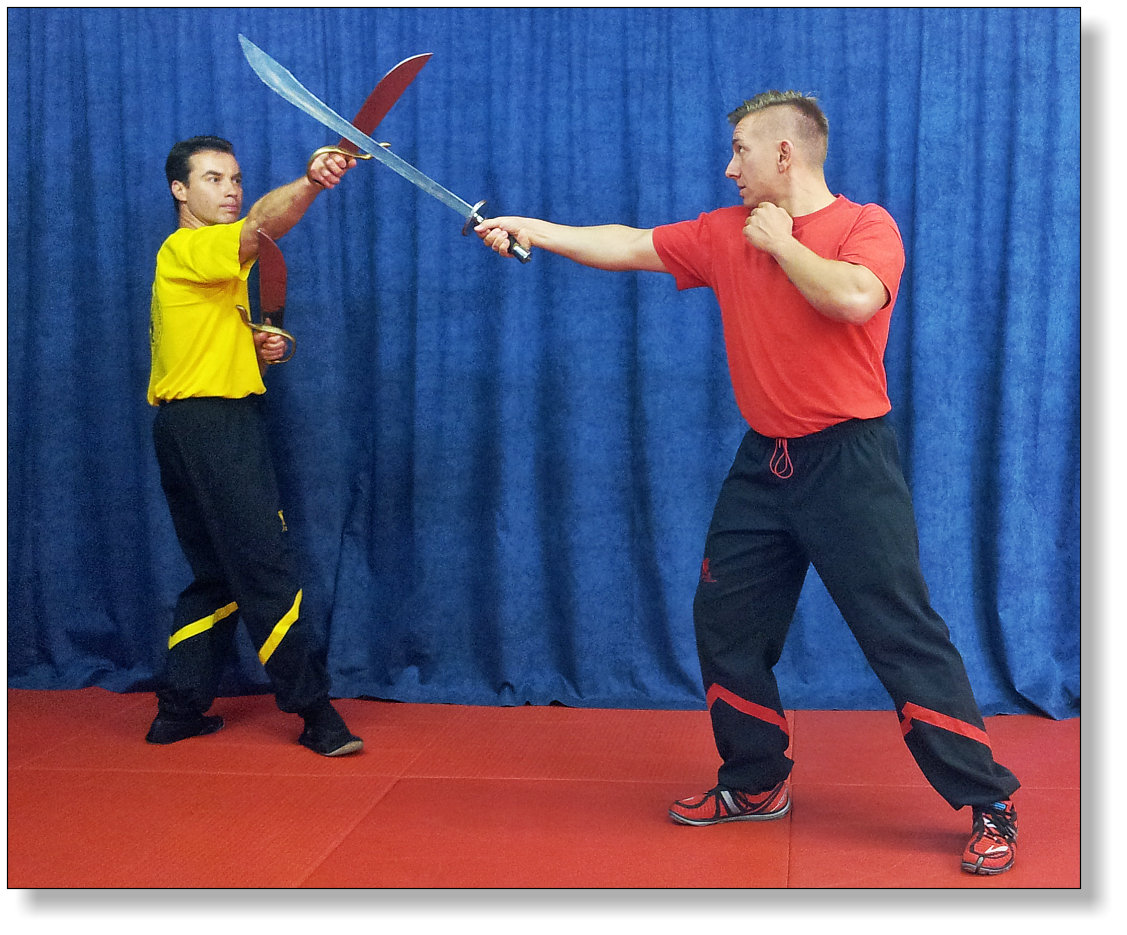
The "Eight Ways of the Knives" are considered the best kept secrets of WingTsun. According to legend, its roots go back to the Hung Gar Kung Fu, and has connections with the unarmed WT system. By the expression "Father and Mother knives" is meant that the WT-specific blades are formed by two "halves" exactly equal that form a whole only when together. Although it should be mentioned that the butterfly knives from Hung Gar Kuen do not have this feature. The origins of this design can be traced back historically to the time when the population was forbidden to bear arms (during the Manchu Dynasty). This design made it easier to hide the blades under the clothes, close to the body.
The eight ways means the 8 cutting directions and are an arbitrary movement directions classification. Nevertheless, the classification is also widely used by several other martial arts with swords/weapons. The number 8 is of particular importance in Buddhism, because it represents the "infinite". Bat Cham Dao thus has 8 sets. Some parts address specific topics eg. the 7th part teaches about how to deal with attacks of flexible weapons.
Tips for Choosing the Right School
Tips for Choosing the Right School
For those who want to learn a martial art, the question arises as to the proper school and the type of system. This matter is of great importance and should not be overlooked. Because before you invest a lot of time and money, you should ask whether the respective martial art and school can provide what you expect from it. The following questions serve as a first orientation.
The Selection of an Appropriate Martial Art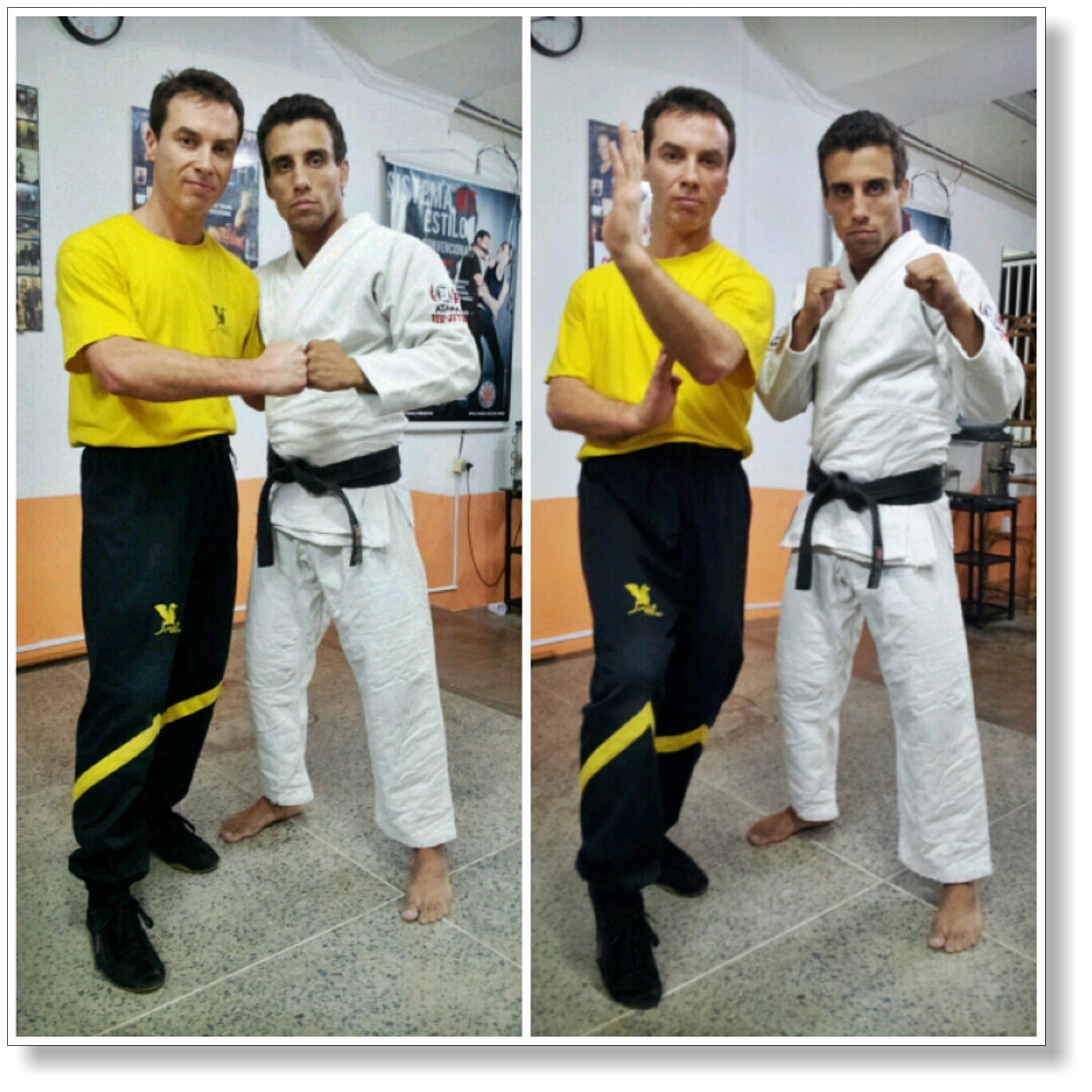
What is the purpose of learning martial arts? Not every martial art has the same focus. Here is a small selection:
• Is it a matter of fascination or search of fun/interesting passtime?
• Are you interested in effectively defending yourself, with your personal protection as main goal?
• Is your goal obtaining physical fitness in terms of strength, stamina and improving range of motion?
• Are you looking for more meditation and inner peace?
Or a little bit of everything? One should keep in mind that even in martial arts which are known for one of the above characteristics, may actually be very different in reality. Even WingTsun, which (originally) was developed as a combat system, nowadays has tendencies in different directions.
The Choice of the Teacher, School or Association
With any martial art, you need to simply take part in an experimental class to get a first impression. But be careful, the initial enthusiasm should not keep you from asking the important questions that have to be asked sooner or later:
• Is it a crash course or the teachers offers regular lessons (for example, 2-3 times per week), with the opportunity of further training?
• The teacher has many years of experience and is indeed a Master in his field? Do not be fooled by mere clothing, certificates or titles. The number of charlatans, self-proclaimed Grand Master and WingTsun business sharks is overwhelming!
• Do you have references about the teacher or about students who have been graduated in the school? How many students have become masters?
• Will the lessons be personally held by the actual master or by trained assistants?
• Are tests mandatory? And will you have to travel to remote places to take them? What will be the extra costs involved?
• Are the actual costs of an advanced education explicitly available to you from the very beginning, or are these costs kept in the dark?
In dubious WingTsun circles, advanced training up to the technician and practitioner levels often costs a small fortune. Prices of EUR 50,000 - 100,000 - are not uncommon (yes, that's right!). This costs are initially concealed and downplayed by the organizations, that use the motto "It all comes later and that is still far off" or "The costs are divided in a long time, which makes the impact of payment less significant." But seriously, with this amount of money you could buy a car or a small apartment. I recommend that you ask right at the start of your training about a full disclosure of all costs of the whole course (up to Master level). If you receive only evasive answers, run from that school as fast as you can!
A few more meaningful questions that you should ask yourself:
• Is it a cult? No, this is no laughing matter. Unfortunately in WingTsun circles this is a serious problem. How surprised would you be if you were to discover, after a while of training, that your teacher, with whom you may have a social relationship, forbids the practice of other martial arts? In some organizations, even memberships are mandatorily "suggested" in Scientology or Masonic lodges, otherwise learning the higher levels of education would never be possible.
• Did someone try to include you, from the beginning, at a marketing scheme or as an assistant teacher? It often happens that members who do not wish to join immediately are "left behind" and don't get any support from that moment on.
• Does the teacher behave like an inaccessible 'God', as a Guru adorned with all sorts of titles or is he approachable and modest?
• Is the teacher really interested in your progress? Did he respond to each question immediately and in an understandable way or did he postpone to "after", saying that this was "not yet available in your current level"?
• Are there restrictions and wait times motivated by commercial or political-organizational reasons, before the next level can be trained?
The last point is probably one of the darkest parts of the WT industry: valuable life time of its members is spent on "Waiting Periods", which only has the purpose of keeping techniques incomplete for as long as possible, during your formation. This practice is profitable and at the same time prevents competition within ranks as this could risk the organizational structure. There is intentional impairment of the learning process caused by the enormous structures of these schools. Because the teacher himself feels "incapable and untrained" he ends up following his Guru master for decades, always thinking: "I still have so much to learn, I am so small." It is a dark game with many psychological tricks.
As an example, the "waiting time" of a large organization of WT in Europe, to learn the complete system, takes more than 30 years! Specifically, it is organized in the following way:
12 Student Grades, every 3 months of training and waiting time for the next exam = 3 years
1. Technician Grade = 1,5 years of waiting time
2. Technician Grade = 2 years of waiting time
3. Technician Grade = 3 years of waiting time
4. Technician Grade = 4 years of waiting time
5. Practician Grade = 5 years of waiting time
6. Practician Grade = 6 years of waiting time
7. Practician Grade = 7 years of waiting time
Total time = approximately 31,5 years!!
There is no way that the more advanced programs would be longer or more difficult, which would justify a longer training period. The opposite is the case: the more experience you gain with the system, the easier you learn the following stages. This corresponds to a natural learning curve. An advanced student of the technician levels could absorb every stage of the course within a few days, and after 3 months could already execute the techniques fluently.
If you are able to understand that this is a scheme, that the complete WT system - without these artificial obstacles - can actually be absorved within 2 years, even as a complete beginner, and can be mastered within 5 years, the naked madness of such lifetime destroying business becomes clear. Do not let such a thing happen to you and look for alternatives!
Unfortunately many martial arts enthusiasts fall into this fallacy. It is a kind of "Group Instinct" where people chose an organization that is "The Biggest as Possible" and has many ramifications. However, this "convenience" has its price. Have you ever wondered: why is this organization so big? Answer: Because it has created, through the artificial delay of the learning process, the dependency of its disciples, trapping people through its volume. Someone from the outside could even think that everyone is able to decide independently whether or not he/she will remain in the organization. But because of the great investment of time and money, an ever greater connection is produced. And if there is an intention to leave, the feeling of "pain" arises because so much energy was invested. Therefore, just a few get out. The whole thing is quite comparable to addiction! At the same time the student feels insecure that his/her training is incomplete and, because of that, still remains tied to the organization. For an instructor who goes through the complete training process quickly, there is no reason to remain associated and submit to rules, paying the costs of staying (Licenses).
I am sorry if you, as a laymen or beginner, for this reason, had your enthusiasm in Wing Tsun diminished. In order to prevent the pleasure of practicing Wing Tsun from being lost later on in your life, you must remain alert, proactive and pay attention to what kind of school or organization you are getting into!
Tip: Do not sign membership agreements with a long period after just 1 or 2 tryout classes. In the first days you are naturally enthusiastic and eager about what is yet to come. Many business sharks in the industry are highly skilled at effectively convincing new students to sign long-term contracts. I advise you to insist on an extraordinary one-month trial period, even at the cost of slightly higher rates, and then decide on a possible membership! This way you can really see what is offered, if the teacher delivers on promises, if the quality of teaching maintains over a longer period and what is the dynamics of the school. Ultimately, you have the opportunity to live with the people who train there and learn from their experience at the school. After 1 month, you take off the rose-colored glasses and you can see things more clearly - it's worth it!
WHAT IS DRAGOSWINGTSUN®?
Dai-Sifu Martin Dragos
Dai-Sifu Martin Dragos
From EWTO National Chief Instructor in Slovenia to His Own Organization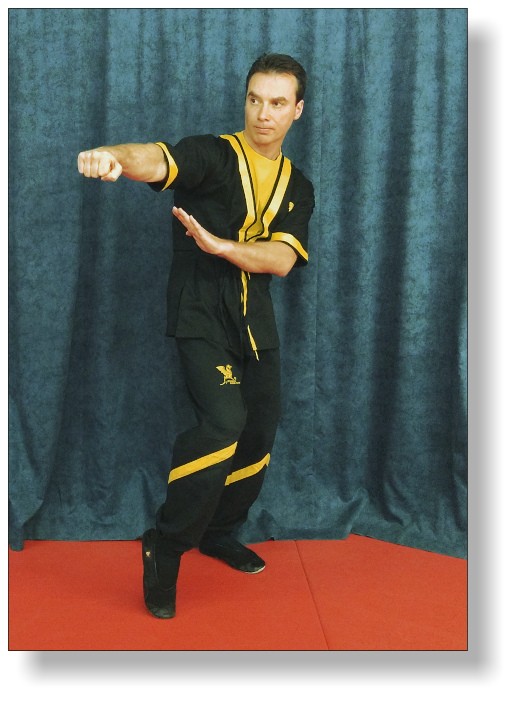
Dai-Sifu Martin Dragos (born 1968) began his journey in Martial Arts at the age of six. For the first 25 years he devoted himself to training WT-Leung Ting System, lead by Keith Kernspecht. Giuseppe Schembri (Chief Instructor of the EWTO in Switzerland) guided him for 9 years, until the end of the unarmed part of the System. From 1994 to 2000 he was the national Chief Instructor of EWTO in Slovenia, having founded, after his voluntary departure, his own organization: "DRAGOS DEFENSE CLUB".
The Diploma as Master of Wing Tsun Kung Fu
In 2001, Sifu Dragos continued his studies with Sergio Iadarola, to complete his training. In 2003 he had been promoted to Master. Although his prior training was long and comprehensive, Sifu Dragos realized over time, however, that the classic WT System he learned from his teachers had many "Missing-Links" (weaknesses and conceptual shortcomings). These "sub-optimal edges" are, in his view, a result of the continuation, based on tradition, of ineffective aspects and standards never questioned, as well as the absence of important aspects lost over time. However, leaving the technical aspect aside, it was mainly the profound disappointment about interpersonal aspects that inspired him to take the final step away from his former teachers.
Evolution against Tradition
According to Sifu Dragos' point of view, misunderstood traditions and the greed of many masters are the main factors that have compromised the development of the System for generations. According to his observations, the Chinese are especially responsible for this. Because of their strong need to follow traditions, they are more easily caught in this trap. This phenomenon is also typically mentioned as "do not deviate from the line". Sifu Dragos believes that the preservation/accumulation of knowledge is not an end in itself. Constant change for the better must be seen as an integral part of the creative culture of evolution.
The one who lets only his teacher think, has no chance to develop. This posture is dangerous and probably will result in others thinking for you. The beginning is always complicated. However, once the "stones start rolling" by the presence of good habits, anything is possible! Just keep training and success will be inevitable. We live in a time, like no other in history, in which we have access to different areas of knowledge. Through the internet it is possible to have access to impressions regarding any existing martial art. Nowadays, this access seems obvious and self-evident. In the past, however, this was not the case. He who neglects the fact that access to different areas of knowledge can be used as inspiration for his own development, wastes valuable potentials. This does not just apply to WT. All Martial Arts are evolving together!
Questioning the "Traditional Way" / Formation of Secret Cults
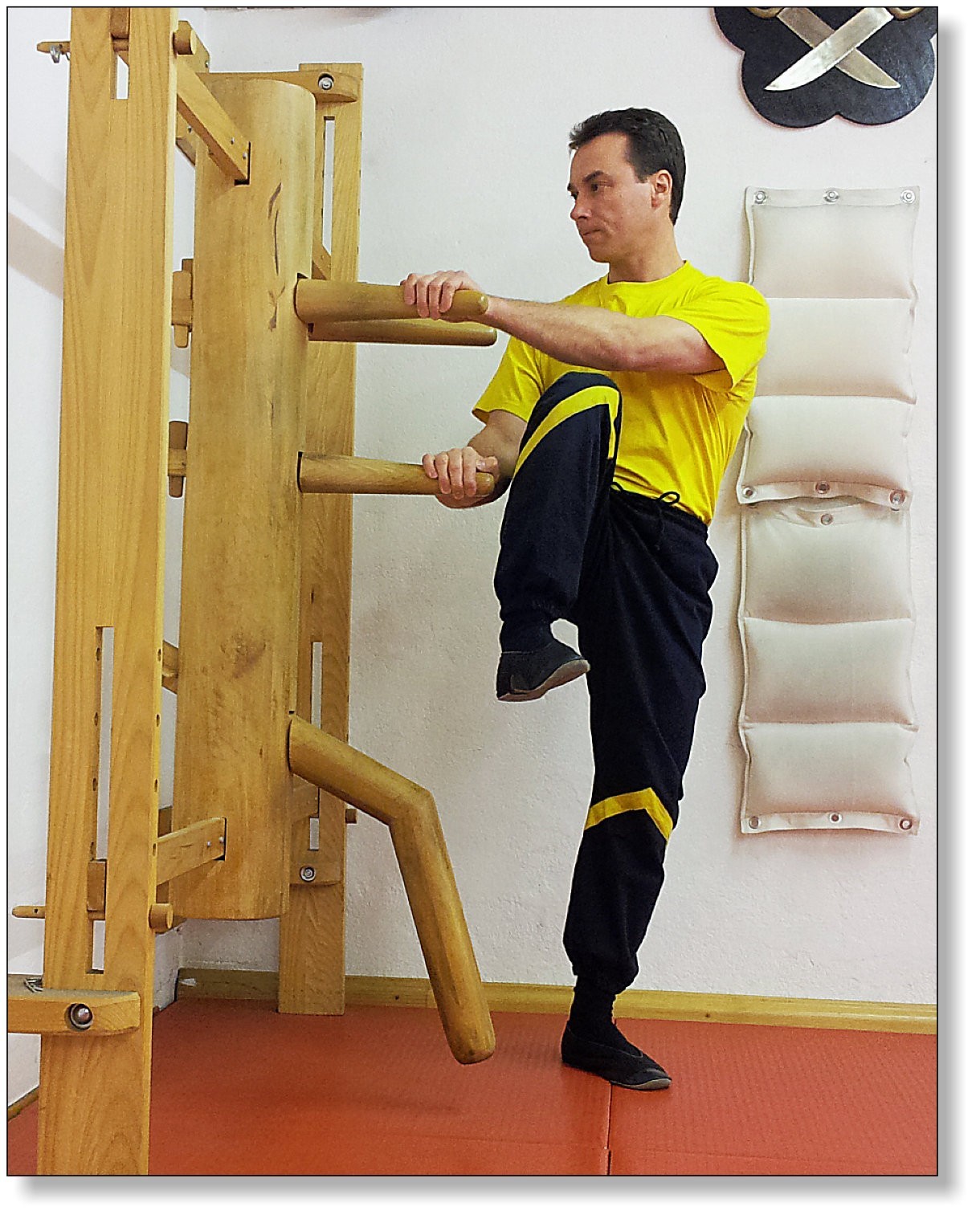
The traditional path preached by the traditional Chinese Martial Arts says: "never deviate from the source, remain faithful to the line." By this thought, knowledge is diluted and contaminated the further it departs from the "Source." At first glance this may even make sense - but not in terms of science and evolution! WT, which calls itself a "Scientific System", is not conservation at all costs, but an idea that is constantly evolving. Only valuable and useful elements are kept and passed on to future generations. In the eyes of Sifu Dragos, the individual is deprived of the chance of his own evolution by the dispersion of responsibilities and creativity of his predecessors. In this process, the evolution is the real constant. It is everywhere, it is ubiquitous. Any serious martial art is the result of the growth in experience, added to the System after the access of each new generation. To ignore and prevent this dynamics is to stagnate our own development.
Unfortunately, especially in Chinese Martial Arts, the information is retained so that one can take advantage of the students. The student is always seen as a potential competitor in the future. This old-fashion way of thinking comes from a time when a person could simply take over a school after beating its teacher in a challenge. In addition, the Chinese regarded foreigners as "invaders" and a threat to their own culture. This "always suspicious" attitude is really understandable, given the context.
What is interesting, however, is the fact that this attitude continues to be perpetuated by non-Chinese, without question. The result is a "Secret Cult." If this process persists through generations, less and less knowledge is passed on to the next generation. As a result, what you see is an atrophy of the System.
Development of the DRAGOSWINGTSUN® system
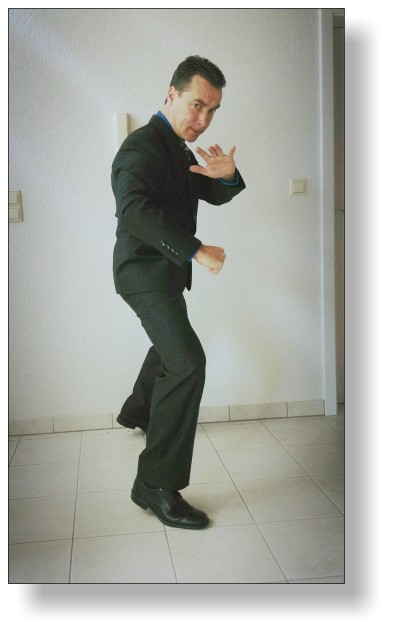
During his 40 years dedicated to martial arts - of these, more than 30 dedicated exclusively to Wing Tsun - Sifu Dragos laid the foundations for his art, the development of DRAGOSWINGTSUN® (DWT). This process was not intentional, but instead was the result of a mentality acquired very early, developed in parallel to his career as an Engineer. This ended up becoming his motivating force: The constant exploration/research of better ways of implementing WT in practice. This "Kaizen" (Kaizen, from Japanese, "Change for the Best") happened during the last 10-15 years of his work and resulted in a WT System with a quality level not yet known. The Long Pole training mainly provided fundamental discoveries that could be transferred to the Unarmed System, due to characteristics such as its simplified geometry and its weight. In practical application, what did not work against physically superior attackers was discarded. The "Extreme" is our teacher - it brings to light what was hidden in the dark.
DWT system is now characterized by a systematic classification of all scenarios of combat in attack, defense and emergency solution, the solution of problems by thinking in functions, the integration of isometric structures, the use of opposing resources by applying the "Relative Force" principle, the simplification of decisions during the visual pre-combat phase, the integration of weapons footwork into the unarmed part of the system, and the implementation of a real automatism based on mechanics concept in case of inevitable collisions.
Experience shows us that DRAGOSWINGTSUN® requires (and encourages) the student to achieve a much higher degree of body control over his/her body than it is necessary when learning classical WT. However, if the student overcomes this obstacle with energy and diligence, he will reach a previously unimaginable level in his/her martial art.
WT-Masters-Academy - Intensive study program for enthusiasts
After the establishment of the Intensive Programs of the WT-Masters-Academy in 2004, it soon became clear to Sifu Dragos that the continuation of the DRAGOS DEFENSE CLUB organization was incompatible with the principles of the WT-Masters Academy. He dissolved his organization to focus entirely on intensive training seminars. While "traditional" organizations keep their students in a vicious cycle that can easily last 20-30 years, people from any organization could learn from that moment on without any obligation to stay connected. The whole system, including the weapons, would take between 1 and 3 years and - with appropriate commitment - mastery could be achieved within 5 to 7 years.
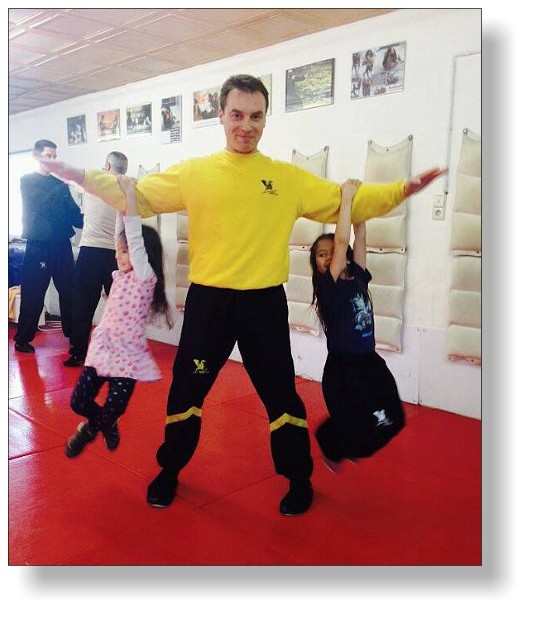 Father of the Liberalization Movement Father of the Liberalization Movement
Within WT circles, Dai-Sifu Martin Dragos is considered the Father of the so-called "Liberalization Movement". He was the first to be successful in dismantling the secret cult and the monopolistic structures of big WT associations. Since then the image of the industry has changed considerably. The possibility of being independent was perceived by large numbers of enthusiasts across the world. For the organizations that still stick to their old "secret cult" standards, change was a matter of survival. Threats of violence and challenges were the result. Sifu Dragos, however, did not feel intimidated or deviated from the path he chose. Since then, many organizations have copied his concept.
Future Perspectives
Through the now created possibility to make the DWT system accessible to everyone online on a worldwide basis, a further step was taken in the direction of transnational liberalization. For Dai-Sifu Martin Dragos, this is also a signal that it is time to give more opportunities to those advanced technicians and masters who have trained diligently in recent years.
Although in the last 10 years Sifu Dragos has been intentionally away from any organizational activity to devote his full attention to intensive training, he recently decided to change his parameters. With the help of the Network of Instructors of DRAGOSWINGTSUN LEAGUE, different Tutors from all over the world should be trained and, in the future, will be an extension of the Chief Instructor. It is irrelevant whether they will operate independently or organized under the DRAGOSWINGTSUN® Organization. The mastery and promotion of DWT is the criterion and common denominator for future tutors. The partner who already acts as a tutor allows the Online-student to complete, in a place as close as possible to his/her residence, his/her practical training. Updates and guidance regarding training will be determined by the Online Academy. For more information, see the "Partner Program" section.
DWT - Fight Systematics, Attack, Defense and Concepts of Emergency
DRAGOS WING TSUN - Fight Systematics
DWT - Fight Systematics: Attack, Defense and Concepts of Emergency
Conceptual Pillars - The 3 Modes of Combat
Among the strategic pillars of DRAGOS WING TSUN® is the classification of combat situations in Attack, Defense and Emergency Concept. The first two modes are considered as behaviors in ideal scenarios, while emergency situations force us to "violate the Rules of Art". In other words, special situations sometimes require special solutions. Both attack and defense concepts follow the "hit and don't get hit" axiom, in which one of the specific strategies is implemented in each case and the reaction will happen according to what happens.
Overview of the Logical Steps
Attack and Defense concept include the following logical steps:

Attack Concept 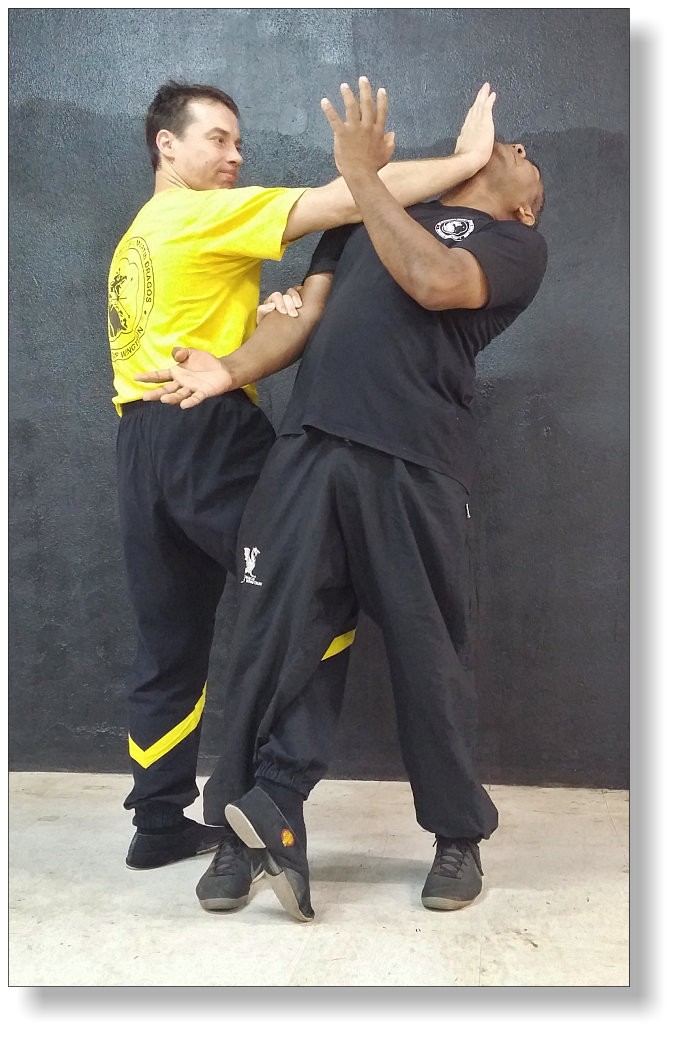
The concept of attack includes a strategy of "Anticipation". In this context, a combat action is used in order to prevent the beginning and development of the opponent's attack, e.g. destroy the source of the attack. An attack that has been prevented poses no threat to us. This approach requires firmness and some aggression during the action. In addition, it demands explosive strength, speed and the identification of key moments and opportunities.
The concept of attack usually happens by means of disturbance/breakage of the opponent's timing, so that we can ensure that the calculation of some of his actions is unsuccessful, e.g., through changes in posture, pace, speed, body tension or attitude.
Defense Concept
The concept of Defense is first and foremost a concept of reaction to an attack that already started, i.e., when we start our approach, the opponent's attacks with a punch or kick is already happening. The Defense concept's maxim is to avoid collision. Only through collision avoidance, someone inferior in terms of strength has a chance to avoid even the most powerful attacks, being able to deal with the situation "without using force". We are able to effectively achieve this by using evasive movements to the sides or through backward movements. If we can perform collision avoidance measures with perfect timing, the opponent's weapons simply do not "reach" us.
Force is ultimately required only for the counter-attack itself (in less vital areas) which occurs simultaneously. An attack on really vital areas (bladder, larynx, eyes etc.) require little force. In this context, often, a question arises for the individual: in situations of self-defense we might not be willing to go that far, anticipating the legal consequences of our choices (aggression charges), we feel frightened and avoid using "technically effective defense" actions.
Emergency Concepts
The ideal process of attack and defense can be disturbed by the occurrence of surprising situations. Once the "perfect approach" to attack or defense has not been successful, our actions will be replaced by emergency actions. These emergency concepts will only be used until there is again a chance to act in the ideal mode. The graphical scheme of the "Matrix of Fight-Systematics" shows this relation:
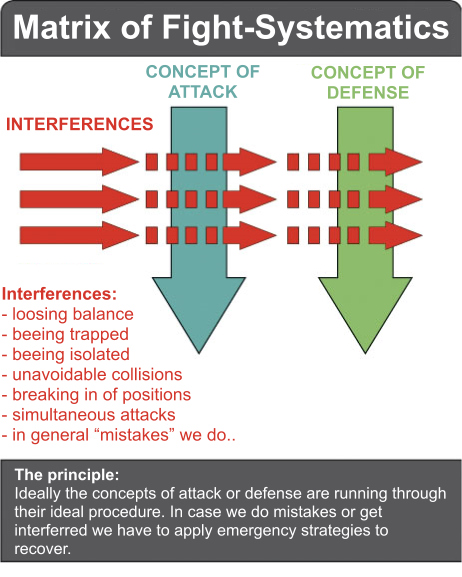
Examples of Emergenciy and Disturbancy Patterns
The most common emergency situations include:
• Quick evading or retreating opponents
• Inevitability before kicks or punches
• Loss of balance
• Breaking in of your arms
• Unnavoidable collisions; not being able to overcome the opponent's guard
• Getting trapped or immobilized
• Becoming isolated, loss of orientation
• Underrun by the opponent
• Simultaneous attacks (multiple opponents)
Program Structure
Program Structure
Module 1: The Basics of the System
Basics Seminar (Student Degree Program)
Module 1 includes the set of all fundamentals. Structurally, it is comparable to the 12 Student Grades (SGs) of most organizations. However, the content offered by DRAGOSWINGTSUN® is very different. Basics Seminars are the first and most important steps in learning WingTsun. They serve to know the concepts, basic forms, footwork, fight systematics and the bases of Chi-Sao (Training of Sensitivity). The Basics Seminars prepare the student, at the same time, for the programs of the Technician Degrees (TGs).
Fundamentals of the System (Basics Seminar / Student Degree Program)
|
Module 1
|
Understanding of the Forms: Siu Nim Tao, Cham-Kiu and BiuTze forms |
| Footwork: Steps of the unarmed program and drills to improve body structure |
| Chi-Sao Bases: Dan-Chi (Chi-Sao with one arm), Poon-Sao ("Bending Arms"), Chi-Sao-Drills of Reaction for Application of the Forms, Defensive Drills, Concepts of "Collision Hierarchy" and its applications |
| Fight Systematics Fundamentals: Attack, Defense and Emergency Concepts in theory and practice |
| Concepts: Mottos, Strategies, Ways to Deal with Forces, Connections of WT with Root Systems |
| Chi-Sao: 1st Section of Chi-Sao with Applications |
Modules 2 - 6: Unarmed Part of DRAGOSWINGTSUN®
1st - 4th Technician Grades and 5th Practician Grade
Modules 2 to 5 include the advanced contents of the 1st to 4th Technician Grades (TGs). This extensive and complex content includes the applications of the forms: Siu Nim Tao, Cham Kiu, Biu Tze, Mok Yan Chong Fat (Wooden Dummy Form), as well as the Tripodal Form. During training, all movement patterns are thoroughly explained and illustrated, in theory and practice. Completion of the unarmed program ends in Module 6, with the 5th Practician Grade (PG, Master Degree)
| Unarmed Program of DRAGOS WING TSUN® |
Module 2
|
1st Technician Grade |
2nd Section of Chi-Sao with Applications |
| 3rd Section of Chi-Sao with Applications |
| 4th Section of Chi-Sao with Applications |
Module 3
|
2nd Technician Grade |
5th Section of Chi-Sao with Applications |
| 6th Section of Chi-Sao with Applications |
| 7th Section of Chi-Sao with Applications |
Module 4
|
3rd Technician Grade |
1st Section of Biu Tze Chi-Sao with Applications |
| 2. Section of Biu Tze Chi-Sao with Applications |
| 3. Section of Biu Tze Chi-Sao with Applications |
| 4. Section of Biu Tze Chi-Sao with Applications |
Module 5
|
4th Technician Grade |
1st+2nd Sections of Wooden Dummy Chi-Sao with Applications |
| 3rd Section of Wooden Dummy Chi-Sao with Applications |
| 4th Section of Wooden Dummy Chi-Sao with Applications |
| 5th Section of Wooden Dummy Chi-Sao with Applications |
| 6th Section of Wooden Dummy Chi-Sao with Applications |
Module 6
|
5th Practician Grade |
7th Section of Wooden Dummy Chi-Sao with Applications |
| 8th Section of Wooden Dummy Chi-Sao with Applications |
| Chi-Gerk, Tripodal Form with Applications |
Modules 7 - 8: The Weapons Program of DRAGOSWINGTSUN®
6th and 7th Practician Grades (Master Levels)
Modules 7 and 8 include the Master programs for the 6th and 7th Practician Grades (PGs). Among the traditional weapons of Wing Tsun are the Long Pole (Kwan) and the Twin or Double Knives (Bat Cham Dao). Until recently, these were among the system's best kept secrets. Until today, in traditional schools, they are only taught after decades of training. While the handling of the Knives provides an extension of the possibilities of action with weapons, visual reaction training and development of joint strength, the main emphasis of the Long Pole is elsewhere. The saying goes: "In Wing Tsun, the Long Pole is the teacher." And this is true, as the Long Pole provides fundamental relationships because of the simplicity of its geometry, provides basic connections that also improve and speed up the progress of the student in the unarmed area. After completing the weapons program, the student is able to assert himself in any distance of combat.
| Weapons Program of DRAGOS WING TSUN® |
| Module 7 |
6th Practician Grade |
Lok Dim Boon Kwan - Long Pole Form, Strength Exercises, Footwork |
| Chi-Kwan - Sensitivity Training with the Long Pole |
| Lat-Kwan - Long Pole Sparring |
| Module 8 |
7th Practician Grade |
Bat Cham Dao - Form in 8 Parts |
| Bat Cham Dao - Applications |
8th Practician Grade (Master Level, Philosophical Honorary Degree)
The 8th Grade of Master does not include any technical program. It is a philosophical and honorary degree only awarded to people who, through their commitment and long-term hardwork, have contributed to the development of martial arts.
Principles and Strategy
Overview of DRAGOSWINGTSUN®- KUEN KUITS
Principles and Strategy
Kuen Kuits ("Words of Wisdom") is an expression that derives from classical Wing Chun. It refers to the collection of key mottos, principles and recommendations of the system. The table shows the most important of them:
|
Categorization of scenarios into Attack, Defense and Emergency
|
When dealing with the Concept of Attack we try to pre-emptively stop the opponent's action by preventing him to execute his attack. As a rule of thumb, our body´s movements are straight and aligned toward the opponent. Besides our own movement as a source of force it is much more the opponent's inertial resistance that we use to empower our actions (relative power principle).
The Concept of Defense includes evasive behavior by moving backward or to the sides to avoid collision when the opponent's attack is alread "on the way" and can´t be stopped pre-emptively. Simultaneously we will execute an attack to the opponent or his weapons.
The Emergency Concept deals with situations in which we are not able to apply the "ideal behavior". It´s all about how to fix a nearly hopeless situation and turn the table to our advantage. The most common emergency situations are: loss of balance, breaking in of positions, unavoidable collisions, being trapped, becoming isolated, simultaneous attacks by multiple attackers, etc.
|
|
Concept of Attack - Strategic Order
|
Concepts of Attack - Strategic Order
1. Closing the gap while simultaneously protecting 3 levels; hereby we will move to a specific boder line defined as the "border of action". It is the distance in which our weapons can reach the opponent's limbs in order to influence him even before getting to his trunk. To give an example here, imagine an opponent extending his frontal guard: we may pre-isolate the opponent and make him lose orientation or balance by executing a pulling movement to his wrist. If applied successfully this will increase our chances to close the gap in a safe manner. This is also described in the next step.
2. Pre-isolation: this step is about how to control the opponent's weapons or how to weaken his attempt to protect himself. Most of the time this is achieved by a pulling action which will rotate the opponent and thus create a small time window which allows us to move in a safe manner.
Pre-isolation can also be executed by moving tactically our body position before reaching the border of action or by executing a strong impulse to the opponent's limbs when dealing with closer distances.
3. Finally we execute our attack by adapting our attack to potential threats. This is about anticipating and preventing potential emergency cases. Like adopting to a puzzle we have to foresee from where a potential attack by the opponent might come from and adopt to "inside" or "outside" by using the correct elbow position.
4. If we don´t succeed at this point we have to again isolate and/or break the opponent's balance (center line)
5. As a last step we will execute a final attack by simultaneausly fixing the opponent by using a "hanging control" (not allowing him to touch the ground) or by taking him down. The decision will depend on the situation.
|
| Concept of Defense - Strategic Order |
Concept of Defense - Strategic Order
Each of these steps might already result in the end of a fight. If the opponent can adapt, neutralize or parry our respective step, the next one becomes necessary.
1. Avoiding the collision by moving to side or backwards
2. Simultaneous counter-attack to the opponent or to his weapons
3. Breaking the opponent's "centerline" (the axis of balance); with or without a simultaneous attack
4. Taking the opponent down or controlling him in a "half hanging" manner (dynamically adopting to his attempts of escape) and applying a final attack
|
Strategic Approaches in an Emergency
|
The following list does not intend to cover all possibilities. It contains only solutions to the most common scenarios:
Losing balance: shock absorbing footwork, anchoring for stabilization, counter impulses using inertial resistance
Braking in of positions: using the next joint for protection (similar to the "bending elbows" seen at Poon-Sao)
Unavoidable collisions: deflections using forward or backward movements, body rotations, use of sliding surfaces, distribution of pressure to larger surfaces, use of leverage (strong structure against a weak one)
Being trapped: special freeing techniques
Isolation: defensive tactics with subsequent re-alignment and counter-attack
Attack by multiple attackers: all measures are aimed to isolate the opponents in a way that allows us to deal with only one opponent at the same time; e.g. use of (human) shields or barriers. In rare cases, simultaneous techniques can be used.
|
Power Sources
and Potential Amplifiers
|
• using one's inertial body resistance for enhancing forward movements
• using the opponent's inertial resistance for acceleration and deceleration
• using the opponent's forward movements to amplifiy one's striking power
• using gravity to empower downward movements
• pushing from the ground when using upward or inside movements (grounding)
• isometric prestrain
• using muscle tension to enable spring-like behavior for dissipating effects
• acceleration using centripetal force
• increasing the impact of attacks by reducing the striking surface (concentration)
• taking advantage of the displacement effect when moving along the line of attack (active or passively)
• increase the efficiency by changing the lever arm
• innervation from the body's center ("Dan Tien")
• making use of the respiratory muscles for empowering strikes or to stabilize one's structure
• use of mental techniques (anchoring, dynamic meditation)
|
| General Principles and Maxims |
• Categorization of movements according their controlling abilities - inside, outside and neutral movements (convex, concave, unstructured)
• Tactical division of all actions into attack, defense and emergency solutions
• Three levels protection for defensive structures
• The strategy of avoiding the so-called 'mechanical blur'
• The use of prestrain and isometrics to compensate for the delay in reaction time during (close range) collisions
• The strategy of 1-opportunity limitation
• The strategy of the broken rhythm (visual area)
• Avoiding ground fighting
• Dynamic control of the opponent (adaptative, continuous, half-hanging)
• Fixing (grounding) control of the enemy
• The robbing of balance by breaking the center line
• The strategy of moving backwards
• The strategy of the approach for using knockout weapons
• The strategy of pre-isolation
• Tactical approaches to deception and concealment of intentions
• Increasing stability by lowering of the center of gravity
• The maxim of avoiding extremes
• The use of vibration and rotation to avoid being grabbed
• Peripheral vision to expand the perception field
• The use of spatial vision (avoiding the "one-eyed view" that comes with turning the head; enabling 3-dimensional vision)
• The maxim of not moving one's head separately from the trunk
• The use of "elbow-force" (pushing from the elbow)
• The use of "spring force" (elasticity)
• Principle of the economic advantage (2 vs 1 Principle; one arm controls both arms of the opponent)
• The principle of energetic reflection (Equal vs Equal)
• The principle of relative force
• The principle of compliance (softness)
• The principle of hardness (intransigence)
• The principle of swinging
• The principle of the fragmentation of forces
• The principle of force concentration
• The principle of inertia utilization for acceleration and deceleration (Reborn Power)
• The principle of purposelessness / passivity
• The principle of displacement (attack line occupation)
• The principle of "hand before foot" (explanation for relative procedures in case of collisions)
• The "body before hand" principle (flow of energy, during attacks)
• The principle of mechanically generated automatism
• The use of movement concatenation (re-use of previous movements)
• The principle of favoring one's strong side
• The principle of giving in with the whole body using proper footwork
• The principle of anticipation / participation
• The wedge principle
• The use of diagonal and triangular structures for creating protection
• The use of aligned postures to create strong body structure
• The strategy of intensifiying and increasing information to overload the opponent's ability to react
• The principle of simplified perception
• The principle of the summary of functional sequences
• The principle of the pre-memorization of procedures
• The principle of using minimum force (the force needed to apply the relative power principle)
• The principle of limitation of maximum force (i.e. use only enough force in order not to lose balance)
• The principle of avoiding words or formulas (use of logical thinking) - instead use a picture or model
• The principle of mental adjustment
• The use of leverages
• The principle of using strength against weakness
• The principle of using weakness against strength
• The principle of changing consistency
• The "universal solution" tactic: This tactic is very well known in WT circles but it is not a part of DRAGOSWINGTSUN®! The "universal solution" is basically a simplification approach, which has been designed for amateurs and beginners. In DWT, this approach will be replaced by the categorization of fighting modes into attack, defense and emergency. In reality there can never be any real universal solution, due to the fact that conditions in a fight can be very variable and will require adjustments for being adequate.
|
| Tactical Principles |
The fight principles summarize the way of acting in a logical sense (comparable to a computer program). In DRAGOS WING TSUN the classical WT-principles have been improved in terms of precision:
1. If the way is free (if there is no guard or obstacle) - Attack, move forward.
2. If the way is blocked - Make contact, stick.
3. If an opponent is stronger than we are, we "give in" in the following ways:
3a.) In stalemate situations: by actively letting the opponent go into the void and then performing an attack.
3b.) In cases of attacks that are able to penetrate: considering the maxim of "two bodies cannot occupy the same place at the same time", by keeping our side stability during the opponent's attack, our body will be mechanically and automatically displaced to a safe position. It all comes down to this: losing balance is a natural thing if an opponent is stronger than we are. We need special footwork to recover from this. Considering that no energy gets lost in a closed system, an apparent disadvantage can be turned to our advantage in the next step.
4. If the opponent retreats, follow him by pulling yourself towards him (Relative Power Principle)
Note: To apply DRAGOS WING TSUN´s Relative Power Principle during collisions we need the "minimum power". Minimum power involves having side stability when moving along the line of attack. The minimum force for pulling actions is defined as the power neccessary to be able to pull ourselves towards the opponent or to isolated positions.
|
|
Force Categorization
|
In DWT we differentiate forces as follows:
• Inner forces: forces which can be created within our body, e.g. spring power, use of isometrics, use of inertia, use of diaphragm and breathing muscles
• Outer forces: influences from outside, gravity, impact, movements and inertia executed by the opponent
• Relative force: using the opponents movements as a tool for enhancing our actions. By superimposing our movements to those of the opponent we create an advantage in strength and position (being accelerated or displaced using his force). Dai-Sifu Martin Dragos developed this approach in his search for a true mechanistic-based automatism. To illustrate what is happening when using the "relative power" principle we use the metaphor of "a race between a snail and a horse". Obviously, since the horse is faster than a snail, the horse would win the race. But once the snail is SITTING ON the horse`s back, the snail's speed is added to the horse's. Thus, the snail always wins!
|
| Power Principles |
The classical force principles were refined in DWT:
1. Free yourself from your own force by only using those muscles you need in a specific moment
2. Free yourself from the opponent's force by not allowing him to apply his force on you (e.g, by deflections or by the principle of yielding like a pressure relief valve)
3. Use the opponent's force to increase ours (the opponent runs directly into our attack) or to accelerate or decelerate our movement ("Reborn Power Principle").
4. Add your force the opponent's in the moment of highest acceleration/inertia
|
Differences from Other Systems
Differences between DRAGOSWINGTSUN® and other Systems
Comparison of DWT with Classical WT
To describe a complex martial art with mere words is impossible. In this sense, only a living impression is truly representative. We therefore recommend that you visit one of our seminars, where we will discuss all aspects of DWT through practical examples. However, in order to give the reader an initial idea of the system, the most important features of DWT are listed below:
Real Automatism
Within the scope of his / her education the learner develops the necessary minimum force, which creates the prerequisite for a real automatism. Only upon reaching this threshold can we speak of a real system, since the abundance of decisions can be reduced to a single thought. Taking into account the mental limitations of the human mind, DRAGOSWINGTSUN® is the only system that provides a method in which the decision-making at the moment of a collision can be made without the need of time-consuming thinking. At the decisive moment, our actions are free from vulnerable "if-the-opponent-does-this-than-I.." behaviors.
Three-Levels Model
A Three-Level Model is designed for simultaneous protection of the trunk and legs. In this context, a distinction of the high/low technical reaction is no longer necessary. Instead, only one decision step is necessary: inside or outside. By avoiding the classic model of "4 Quadrants" or "4 Fields" (6 fields, if you include the legs) we decrease by 50% our response reaction time pattern (2/3 of decrease in reaction time if you include the legs).
Adjusting the Body Weapons to the Inside-Outside Principle
In DRAGOSWINGTSUN® we use the principle of Inside/Outside to adjust the arms in relation to our body, in all distances. This includes both the aspects with and without contact of the unarmed parts of the system, as well as the weapons training.
Customized instead of Universal Solution
A "universal solution" in the sense of always using the same "approach with a punch and kick" violates logical laws of combat. WingTsun, as a natural system, is based on adaptability and flexibility. Therefore, it is important to adjust according to the requirements and possibilities of each combat situation. Each of the combat actions may include different starting points, in which we will need to distinguish between defensive behavior, offensive behavior or those situations where we are out of ideal conditions (known as "emergency solutions").
Each of these three modes (Attack-, Defense-, and Emergency Concepts) requires different approaches related to bodywork, use of force and strategy. The general concept of these three modes is described in DRAGOSWINGTSUN® through the so-called "Fight Systematics". All modes are connected in a logical context.
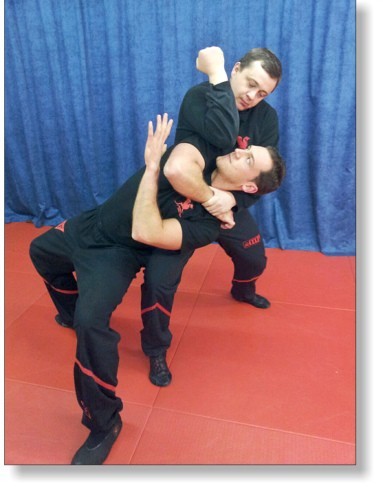 The Mechanical Principle The Mechanical Principle
The implementation of the system has a mechanical nature in DRAGOSWINGTSUN®. The functions are based on elastic behaviors, but also pressure and tensile strength elements are incorporated and are clearly defined. Like a mathematical equation, it is clearly defined which of these behaviors should be used considering the required properties, and how to generate automatisms. Knowing exactly what to do in each of the moments of combat is a top priority.
The "Four-Step Model"
Combat is covered by a 4-step model. These steps are:
1. Preventing the action of a (potential) attack using an evasive behavior (Defense Concept) or by means of a preventive behavior (Attack Concept)
2. Control through isolation or immobilization. During the process, the opponent should not have opportunities to use their weapons.
3. Loss of balance
4. Dynamic control with a final attack. The opponent should ideally be "hanging". By not allowing him to go down, even without balance, we keep the opponent in a uncomfortable position during this final process.
Limitation to One Opportunity
Throughout the fight the opponent does not have a second chance to attack. After the first contact, a dynamic link is established through the concepts of "Bridge Construction" where the opponent will not be able to use his weapons. In this way, a prompt response from the opponent (which would inevitably lead to an overload of information, increasing the chances of being hit) is avoided.
Focus on Strong Points
DRAGOSWINGTSUN® involves the incorporation and use of the talents and strengths of the practitioner. Observance of laterality (preferred side) thus plays a major role.
Relative Force / Relative Speed
In DRAGOSWINGTSUN® there is a principle that one should never rely solely on speed or on mere structural advantages (e.g. simultaneity of attack and defense). Instead, a pre-calculated protection against subsequent attacks is included in every action. The absolute strength and speed of the opponent can be used in our favor through the "Relative Force Principle". The movements and the strength of the opponent can be used as a vehicle for gaining an advantage by adding up our own movement to his. We can use relative force for both pushing and pulling movements.
Energetic Adaptation / Reflection
In order to neutralize and weaken the attacks of an opponent, the principle of "Energetic Reflection" is used in DRAGOSWINGTSUN®, which is derived from the principle of "Equal vs. Equal" (Hermetic laws).
Reborn Power Principle
The larger the mass, the slower it will behave, in relation to acceleration. Taking that into consideration, in DRAGOSWINGTSUN® this natural phenomenon is considered in the conception of the "Reborn Power Principle". By this principle, we are able to accelerate or decelerate our body with the opponent's help, so that we can develop more strength and speed in relation to him. This principle goes hand in hand with the "Relative Force Principle". For example, we can use an opponent's body inertia to increase our own acceleration. We also make use of the energy generated when we lose balance after colliding with the opponent. We learn to use the corresponding inertia, adding our force and acceleration to the opponent's. We make use, so to speak, of an energy which was formerly produced, hence the name "Reborn Power".
Integration of the weapons footwork into the unarmed part of the system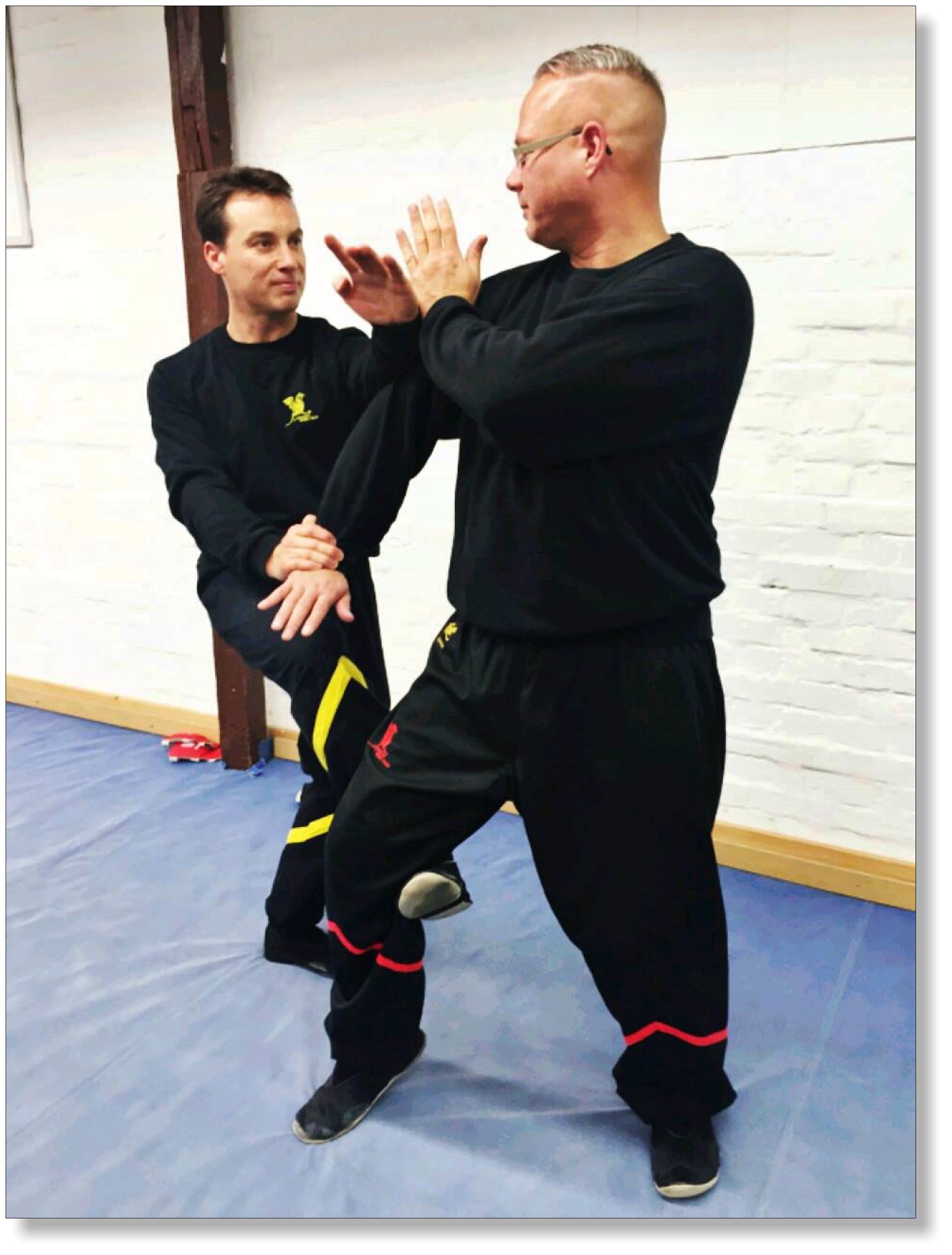
In DRAGOSWINGTSUN®, when we are forced to yield, we move first using footwork, which has as biggest advantage the fact that, that way, we don't need to make decisions. The so-called "softness", a standard word in WT circles, is often confused with "weakness" - with fatal consequences.
Traditionally, the footwork needed for the weapons programs is only transmitted to the student in the last stages of learning. Conversely, in DRAGOSWINGTSUN®, the student starts to learn this footwork already in the first lesson. This means that the student does not have to "forget" or "throw away" what was once learned in order to progress to the weapons program, but instead he learns the steps of the advanced training from the beginning. All this is possible thanks to the interaction of the interconnected components.
Hierarchy of Collision Events
In DRAGOSWINGTSUN® we distinguish between various results after collisions, which are reflected in a collision hierarchy:
a.) Stalemate (the Tie Situation):
Neither party has lost balance. Weapons of both sides are neutralized.
b.) Collision with Loss of Balance and Displacement
One of the parties is stronger. The weakest one is able to maintain his position and is "moved", as a result of the opponent's occupation of the line of attack.
c.) Collisions with Bending of the Limbs ("Poon-Sao"):
One of the parties is stronger. Due to late muscle contraction, poor timing or because the impact of the opponent's attack occurs in a "weak part of the arm", our limbs can yield or be bent ("Poon-Sao"). The next available joint assumes control, in the sense of an emergency protection solution. The bent arm then returns to its initial position with a spring-like movement, performing an attack, and so on.
Sophisticated Footwork
One of the trademarks of DRAGOSWINGTSUN® is its great richness of footwork variety. This allows the practitioner to be able to have an arsenal of different responses available to him during the various situations of combat.
Decryption of the Forms
The forms of DWT are considered important learning steps for acquiring fundamental movement patterns. These patterns are comparable to tools, which can be used for different applications. Just as an example, just as a knife can serve to butter a loaf, cut an apple, open a nut or tighten a screw, the movement patterns contained in the forms do not have their applicability limited to just one fixed purpose. All forms are designed to complement each other by the interplay of their patterns. From a functional point of view, each form includes certain aspects:
Siu Nim Tao Form: The Siu Nim Tao ("Simplified Form") is a didactic construction. By decomposing complex movements into simpler structures and working mostly with only one arm at a time, our brain is able to process information more easily. The form is used to acquire fundamental movement patterns and to learn the muscular memory necessary to create mechanisms responsible for generating upward, downward and horizontal movements, as well as the combination between them. An optimal effect is achieved, through precise mastery and interaction of all parts of the body itself.
Cham Kiu Form: The Cham Kiu form includes patterns for bridging distances, isolation and throwing.
Biu Tze Form: The form has focus on possible emergency solutions including scenarios of loss of balance, unavoidable collisions, collapse of the arms, release of immobilizations and clinches, as well as approaches for simultaneous attacks of multiple aggressors. Due to the "intrinsic aggressiveness" of its movement patterns (elbows, fingertips, corners of the hands) is frequently and incorrectly considered in WT circles as a form of attack. However, in DWT, the use of hazardous techniques in emergency situations is a means (necessity) and not an end in itself.

Preservation of Knowledge / Equality of Opportunities for All
DRAGOSWINGTSUN® is taught in the so-called "Lessons". They are not "Dead Processes", instead they provide examples of practical applications of form content. With this method of didactic mediation the learner develops, step by step, all patterns of action and reaction of the system and is guided by a tutor through its aspects and hierarchies of knowledge. The advantage of this system is that valuable knowledge is not lost even over generations, but every student is taught the entire knowledge.
In contrast, a teacher who teaches his students only their personal approach and favorite content will be acting in a negligent and irresponsible manner, since if this process is perpetuated, it will inevitably lead to the loss of knowledge offered to future generations. Only the systematic structuring and preservation of knowledge, for example through lessons, will be able to avoid this process of deterioration. This is especially true in modern times, for unlike feudal times, when art was taught to only one or a very restricted number of students, today the instructor often teaches many at one time.
INFO FOR THOSE WHO ARE TIRED OF BEING MISTREATED BY ORGANIZATIONS
Arrogance
Arrogance
Culture of Arrogance
The Most Expensive Martial Art in the World
The most expensive "Martial Art in the world" causes dependence for more, more and more. A well-known Chinese Grand Master of Wing Tsun once described his relationship with him and his students: "Have you ever seen a drug addict?". He used this overbearing question as a way to emphasize his importance. Disregard for people - as well as for other martial arts - is unfortunately the rule in WT circles, not the exception. These are the unhealthy fantasies of power of some questionable "Grandmasters" who pass on the seed of arrogance to the next generation of students. His narcissistic and inaccessible behavior accompanies them throughout his life. WT was (originally) a sophisticated martial art and efficient form of self-defense. However, a WT teacher who finds himself "better" than other people because of his technical superiority is at the very least ridiculous. We all have talents and abilities that we should be proud of. But no human being is more valuable than another. In this way, pretension and arrogance are inappropriate.
The Overestimated Claim of Technical Superiority
Martial arts evolve rapidly, and they are all evolving. Through various types of media and publications, we have never before had so much access to sources of knowledge, which did not exist until very recently. The syncretism ("blending") of martial arts means that there are many effective arts of self-defense today. The discourse of WT Masters that WT is "the most effective martial art in the world" is therefore inadequate, improbable and narcissistic. Today we see large WT organizations learning and accepting links to other martial arts, even without a formal bond. In this way, a little more modesty would be advisable.
Misanthropy and Sectarianism
The condescending and disdainful speech of some teachers sounds bizarre to the novice student who entrusts his training to the hands of a WT instructor:
• "Do not ask questions!"
• "This does not belong to your program!"
• "You can not train with people from other schools!"
• "You can not show any technique to outsiders!"
• "You can not train other martial arts!"
• "We determine your social relationships outside the academy!"
• "You must do the tests / seminars!"
• "When you leave the organization as an instructor, you must pay a high rate of termination!"
• "To be recognized as a master, you must sign a contract (Gag)"
• "You should never touch your instructor without permission!"
• "You should bend over and treat the teacher by the title, even outside the academy!"
• "You must take private lessons to advance!"
• "You must pay for a Sifu's title!"
• "You must take separate preparatory courses to take the next test!"
• "When you leave the organization, all your certificates are worthless and meaningless!"
These are just small examples of rules that are common in many schools of WT organizations. The large number of prohibitions resembles a structure of Cults but are dismissed with the euphemistic expression "Chinese Tradition", as if it were something worth pursuing. In fact, all these rules seek tutelage and control of the student with ulterior motives to ensure a maintenance of power and achieve the goals of the business. Respect and honor should be a two-way street. A teacher, who expects the respect of his student, must prove himself worthy of it, showing an examplar behavior.
Secret Cult
Secret Cult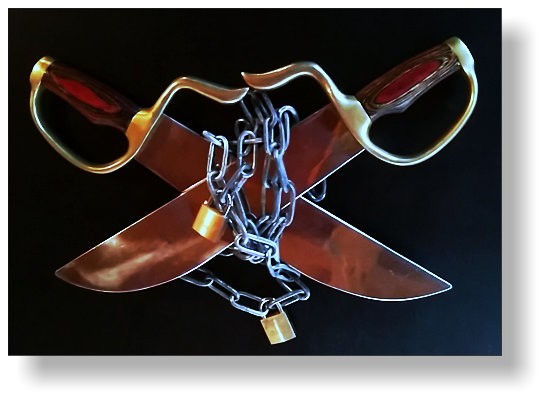
The sad trademark of WT
The so-called "secret cult", which is still found in the WT industry, originates from its historical roots. In the history of WingTsun, it was usually the case that martial arts were not to fall into the wrong hands (such as the hands of invaders). In addition, it was necessary to keep the identity of the founders and the successors of the masters a secret, especially during wartime. This attitude was also shared by Grandmaster Yip Man. It is said that he refused to present the last secrets of the system to his most famous student, Bruce Lee, since he spread the art to foreigners in the USA.
The secret cult, which we encounter today in the WT industry, is of a different nature. It is mainly based on the preservation of economic interests and the safeguarding of customer bases. From an entrepreneurial point of view this seems efficient and wise. The customer, however, is deceived, since he assumes false facts while thinking he is being mentored by a trustworthy teacher. By retaining and controlling the flow of knowledge, dependencies are created without the student being aware of this. This is the downside of these martial arts organizations. They can only exist and expand as they are now as long as it is possible to hold existing members and recruit new ones. Some even say that in most WT organizations the student will never be able to reach the end of the journey - to learn the WT System completely.
World of Illusions
World of Illusions - This is how they keep you in the dark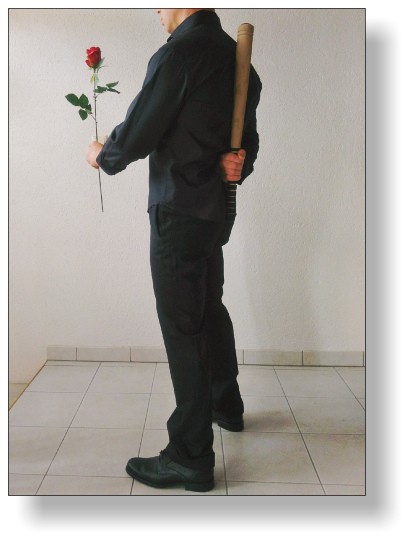
A brief overview of the psychological tricks of the WT Gurus:
The Family, which is not a Family
In ancient China, for a long time, there were no martial arts schools open to the public. Martial arts were taught only among family members or clans. The "Sifu" (Paternal Teacher) was responsible for all aspects of the lives of his students. In addition to technical training, shelter, food and moral education were included. On the other hand, loyalty and obedience were expected. As romantic as it may seem, the modern reality of the WT market has little resemblance with that specific kind of thinking. Today an attempt is made to build a bridge that connects with the old traditions through references to a familiar system using treatments such as "Sifu", "Si-Hing" (older brother), "Si-Dai" (younger brother), etc. Other examples are the perpetuation of rituals used in the old days as a sign of respect and submission (bowing in compliance, tea ceremony, avoiding certain postures), being quickly punished if left the line, etc. Nevertheless, the expression "Family System" is pure hypocrisy:
• Even if you have been a loyal member for decades, if you are going through financial difficulties even once, you will be reprimanded and your learning will be put on hold.
• If you have built up schools for your Sifu for many years, but decide to leave the organization, you will be slandered, ostracized, and lies about you will be spread.
• If an active member maintains friendly relations with a former member, suspicion arises and he will be warned.
• If you are interested in other martial arts, you will be criticized and firmly repressed.
• You have to pay in order to obtain the "Honorary Title" of "Sifu" (oh what an honor..)
And so it goes. Only the financial factor counts. There are not even traces of the "Martial Arts Spirit." Sooner or later an attentive person should recognize the farce that is represented here. Interestingly, it is the emotional bonds, or the esteemed belief to the end, in the figure of the affectionate father that prevents the awakening of the "trance".
Seeing each Student as Future Competition
For an organization that puts its economic interests first, safeguarding and maximizing its profits are top priorities. A teacher who sees his student only as a potential competitor will never pass the "torch" to the hands of another - and at the same time ensures that the students never achieve their goal (learning the whole system). Therefore, several preventive control mechanisms are applied to students. These controls are so subtle and perfidious that they are not perceived as such:
The Belief: You are Small and Insignificant
"You're nothing, I'm everything!" - this is the doctrine that is used so that the student remains faithful to his Sifu. The student is first shown, through physical and technical aspects, how "inferior" he is. Even if he rises to the team of instructors, he is aware that, although he knows more than his training colleagues, he has thousands of doubts and still feels that his knowledge is incomplete and imperfect. It is the intentional retention of information, about deeper conexions of the system, that keeps the fire of curiosity alive within him. The student also analyzes the reasons why he is not able to reach the same technical level as his Sifu, since normally (by his own life experience) he knows that a student reaches a degree similar to that of his teacher after some time, when he is given all of the knowledge. Something wrong must have happened, but he does not know what it is. He does not realize how the "Godfather" repeatedly deviates him from his path of technical growth. All theories are discarded after a few years and the student goes on. The main pillars of already established techniques are declared overnight as simplified knowledge. After several years, the student does not master the content, is more confused than before and is still not able to fight. He has already seen and collected all sorts of techniques but is unable to effectively apply any of them. He asks his Sifu, what should I do?: "You are not ready yet - train more".
Artificial Barriers
People who wish to rise in life, talented and entrepreneurial individuals are not welcome to the Chief Instructor. Who discovers that he is really "good" and realizes that he stands out from the majority, having a good performance, turns into a "shaky candidate" - he must be prevented from growing in the organization by means of artificial barriers. These means, that are very effective, are the "astronomical prices" and the "waiting times". Many already fail in the first obstacles, because not everyone has thousands of Euros left to pay for a formation of Technician Grades (TG). And even people with a lot of money are not able to buy the rise in the system, as they run into the obstacle of mandatory waiting time. If a person had been told at the beginning of the training that 25-30 years would pass before he could "see" any particular educational content at all, he might not have chosen WT. It's pure destruction of life time.
Elimination of Communication
Although some organizations have thousands of followers, there is no real communication among the members. Unilateral information by means of announcements are all there is. After all, members should not become aware of unpleasant truths.
Unlawful Restrictive Contracts
From the more advanced levels of Practician Degrees (PG) on, the situation becomes even worse. When an advanced student (Master) leaves an organization, this becomes a big warning sign for the rest. None of the more advanced instructors can be "very popular" or play a particularly important role. Master titles are only granted after unilateral contracts are signed. The one who signs must submit to an abusive contract, which states that he can only leave the organization after paying astronomical severance fines or by making unsustainable concessions. These mechanisms, many of an illegal nature, always leave the one who signs with a doubt as to whether or not all aspects are being done correctly and whether "all the cards are on the table". But, you will never have access to a copy of this agreement. And the reasons for not getting a copy of the contract are based on bizarre excuses. The contract suddenly disappearred, was lost by the Guru's wife or was ruined in the washing machine (these hilarious accounts are based on real facts!) - beautiful pearls of the WT world.
Avoiding Financial Mistakes
How to avoid the biggest financial mistakes
Financial Goals Are Made At Home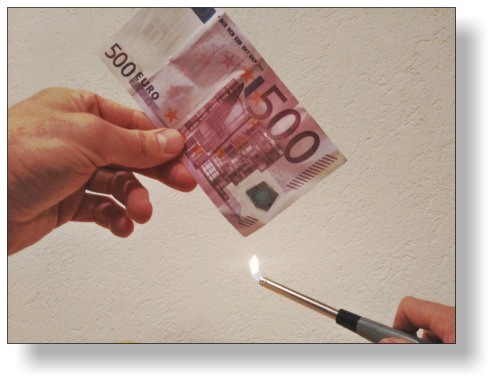
Fear of your own Teacher
"Thou shalt have no other God before me". No, we're not in Bible class. Instead, this phrase refers to what most WT organizations expect of their "disciples". He who "gets caught" looking outside the box and understanding the whole situation is in trouble, is warned or even expelled. Imagine grown-ups, considered to be "mature people" being diminished, without the least ceremony, to being children again. It is the fear of the teacher that leads them to wish to learn what else is out there in anonymity. Many WT enthusiasts, because of their thirst for knowledge and the simultaneous fear of being discovered, end up being trapped in the "DVD Collector's Mindset". It is not uncommon to find people who have massive collections in terms of content, the stuff you see in Public Libraries, with all titles available in the market. On closer inspection, at some point they could come to the conclusion that, for the same amount of money, they could have access to a complete training in the real world.
Reveal the Wolves in Sheep's Clothing
Many times, the enthusiastic layman is as motivated as he is inattentive to some details in the beginning of his practice of a martial art. He is not aware that he is about to enter a long and time-consuming path, of which he should be aware of from the beginning. A dynamic of the "one who invests is motivated" is created, which results in an effect comparable to the action of a "Black Hole". The student will be drawn in its direction so that it will be practically impossible to rescue him from the established structure. For this reason, for those who are willing to commit to a system for a lifetime, first make sure you have not found something better! Pay attention not only to the value of the monthly contributions, but especially to all hidden costs. Most WT organizations are full of them. In addition to the school monthly fee, usually on the following additional costs:
• Annual membership fees
• Exam fees
• Seminar fees
• School uniform
• Protective gear
• Travel and accommodation expenses for attending seminars and compulsory examinations; Many examinations are only valid with the Grand Master or their assistants. The journey is therefore usually unavoidable.
• Program fees for higher levels: This is by far the biggest block to learning. For example, one of the largest WT associations in the world currently involved a EUR 3000 "program entry fee", which is paid so that one can "have the priviledge" of learning the wooden-dummy form (entry fee = permission for learning, without any actual lesson!). An EUR 8000 fee for learning the double knives form. These costs are deliberately concealed at the beginning of the training or, if one happens to discover them, the costs are sugar coated with the motto "the costs are distributed into 25 years" or "is still very far away", etc.
WT training nowadays in already famous associations can cost more than EUR 50,000! Do not just compare prices. Always take into account the "real prices", which considers all of the hidden costs. Therefore, when signing a membership contract, my suggestion is that you list all of the subsequent costs in writing in advance and insist on the inclusion of these costs in the membership contract. This is the only way to avoid later surprises. You will see how quickly the face color and mood of the person in front of you changes when he has to "drop the pants" and reveal these things.
Culture of Keeping Students Dumb
Culture of Keeping Students Dumb
How the System is Destroyed From the Inside
Inheritance of Ignorance
Example of a dialogue between teacher (Sifu) and student (To-Dai):
Student: "Si-Fu, why should not I practice this or that technique?"
Teacher: "Your 'pot' is not ready yet. Do not ask any more questions and keep practicing".
Is this dialogue familiar to you? You have a question but no answer. Additionally, questions are not allowed. The student is reduced to the dependency level of a child. There are many doubts and questions in your head. The person is stalled with the "later", but the "later" never actually arrives. After 10 years, your degree of education remains the same. The "Inheritance of Ignorance" is therefore consolidated. And when you have to open a school so that you can afford your organization's expensive training, the game goes to the next step. Now the inner conflict and the pain begins, for you and your assistants need to lie and pretend that you always knew that information when your own students started asking questions. You yourself will then give the same answer: "Practice now and do not ask questions - this will come with time".
The Fairy Tale of the True Source
Talking to members of different associations, asking them why would they hold on to the organization, although they are treated badly and learn slowly, one often hears "I do not want to lose contact with the true source". Unbelievable! If you recognize yourself or someone else at this point, you should ask yourself this: is a source that does not give you any water, indeed a source at all? The deliberate deprivation of information, the passing-on of half-knowledge by unqualified teachers, the stubborn and closed mind of the "master" to new ideas, a misunderstood preservation of tradition, the blind acceptance of what is taught, and the deliberate continuation of the Secret Cult leads each new generation of students and teachers to a "Spiral of Decline of Knowledge" and impoverished development. Making the situation even worse, the commercial mentality and the competition for market space contributes to the halting of fruitful exchanges of knowledge. The so-called "source" becomes a drying "puddle".
Quantity and Quality
There is a natural law that says Quality and Quantity seldom go hand in hand. It is not easy to turn a large number of semi-skilled instructors into truly qualified teachers. But some organization deliberately choose to embrace this law in order to create dependencies. For he who feels "immature and incomplete" still has much to learn and accepts his place within the organization. Only the most advanced and experienced instructors are a "problem" in the eyes of the Guru Grandmaster. So they have their growth hindered, by mean of restrictive contracts and exorbitant prices. Just be curious and ask about the astronomical prices charged for the training content of the master degrees. Machiavelli sends his greetings! So the next time you hear a Guru say with satisfaction that "We are the biggest organization, we have the largest number of schools!", be sure that this size has been achieved at the cost of a general loss of level of the members of the organization. Obviously the question that people should ask themselves is whether an organization's focus should be on quantity or quality. Mundus vult decipi, ergo decipiatur - The world wants to be deceived: Therefore, let it be deceived!
RIGHT TO SELF-DEFENSE
Self-Defense
Right to Self-Defense 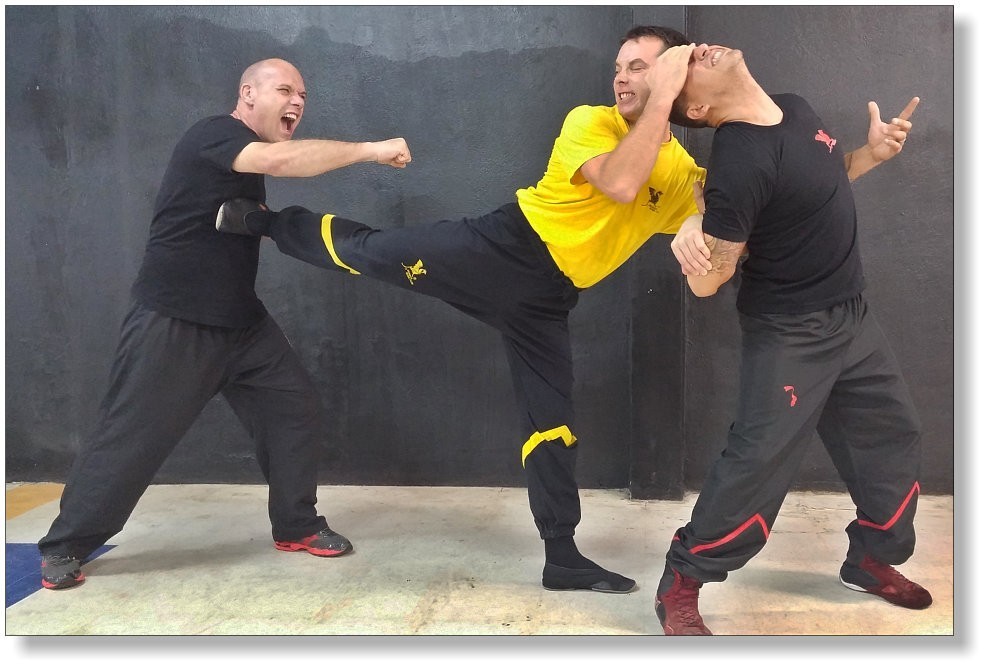
Self Defense
Paragraph 32 of the German Penal Code -
1. A person who commits an act which is considered self-defense, did not commit an unlawful act.
2. Self-defense is the defense which is necessary to avert a present or imminent unlawful aggression to himself or another.
The question of when the attack starts is a decisive factor for self-defense. The law does not require you to wait until the fist of the aggressor has broken your nose, before defending yourself. You may legally make use of self-defense as soon as the attack begins. That is, for example, when the opponent assumes a fighting stance and starts to shift his or her balance for a kick or punch or when the distance is altered with a clearly recognizable hostile intent for attack preparation.
An important point in deciding who is an attacker and who is a defender, will be the question: Who first went to whom?
To clarify this matter, I recommend my students, first of all, to demonstrate by means of video documentation or witnesses that no attack existed from their part. If the opponent has a clear motive and intention towards causing you harm, it is usually clear to anyone who is the attacker and who is the defender. To be able to properly identify yourself as a defender, you have to wait for the beginning of the attack. But once it starts, you are allowed to go quickly into the attacker and execute your technique to neutralize his aggression. The defense, however, should not exceed the attack.
Paragraph 33 of the German Criminal Code
If the defender exceeds the agression, causing excessive harm to the agressor, he did not act on self-defense. However, if the defender exceeds the limits of self-defense because of confusion or fear, he should not be punished.
Paragraph 34 StGB - Justified Emergency
A person who, in a present or imminent life-threatning situation, or situation that will harm his/her body, freedom, honor, property, or other legal right, commits a deed to avert the danger to himself or another, is not to be prosecuted by the law. The legal rights concerned and the degree of danger threatening them are relevant aspects which will be considered. However, this applies only if the act is an appropriate means to avert the danger, and does not exceed the agression.
Paragraph 35 StGB - Excusing Emergency
1. Any person who commits an unlawful act, in a unavoidable situation of danger to life, body or liberty, in order to avert the danger to himself/herself, to a relative or to another person close to him, is guilty of no fault. This does not apply if the offender, in the circumstances in particular, has directly or indirectly caused the risk; However, the penalty might be reduced according to Article 49 (1), if the offender did not accept the risk with regard to a particular legal relationship.
2. If the offender has caused the situation at the time of the act but would otherwise be excused under Paragraph 1, he is only punished if he could somehow have avoided the situation. The sentence might still be mitigated according to the Article 49 (1).
Paragraphs of Sexual Offenses
Paragraph 177 StGB - Sexual Coercion, Rape
(1) Any person who
| |
1. |
with violence |
| |
2. |
by threat with danger to body or life or |
| |
3. |
taking advantage of a situation in which the victim is at the mercy of the action of the offender, |
performs sexual acts or incites a third party to perform such acts, shall be punished with imprisonment for no less than one year.
(2) In particularly severe cases, the sentence of imprisonment is of no less than two years. A particularly severe case usually occurs when
| |
1. |
the offender performs sexual intercourse with the victim, or carries out similar sexual acts on the victim, especially when these are related to penetration into the victim's body (rape), |
| |
2. |
the act is committed by several offenders. |
(3) Imprisonment for not less than three years is to be recognized, if the offender
| |
1. |
threatens to use of a weapon or other dangerous tool, |
| |
2. |
prevents or overcomes the resistance of another person by force or threat of violence or |
| |
3. |
threatens to cause a risk of serious damage to the victim's health with the act. |
(4) Imprisonment for not less than five years is to be recognized if
| |
1. |
the offender in fact makes use of a weapon or other dangerous tool, |
| |
2. |
the victim |
| |
|
a) |
is physically harmed during the act, |
| |
|
b) |
suffers under actual risk of death. |
(5) In less severe cases (Paragraph 1 and 2), a sentence of imprisonment of six months to five years is usually proclaimed. In more severe cases (Paragraphs 3 and 4), a sentence of imprisonment of one year up to ten years is usually proclaimed.
Paragraph 178 StGB - Sexual Coercion
1. Anyone who compels another person, by force or by threat of danger to his body or life, to tolerate sexual acts of the offender or a third person, or to perform such acts to the offender or a third party, shall be imprisoned for a period of one to ten years.
2. In less severe cases, the sentence is of imprisonment from three months to five years.
3. If the offender causes the death of the victim with the act, then the penalty of imprisonment is of no less than five years.
OBS. The laws for self-defense vary from country to country. They sometimes even vary in different states within the same country. It is highly recommended that you know the specific laws of your country/state.
|
|
|
|
|
|
|
|



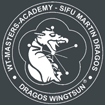














 Hand Techniques
Hand Techniques Siu Nim Tao Form
Siu Nim Tao Form
 To learn the typical flexible properties of WingTsun (in WT, we
To learn the typical flexible properties of WingTsun (in WT, we 



















